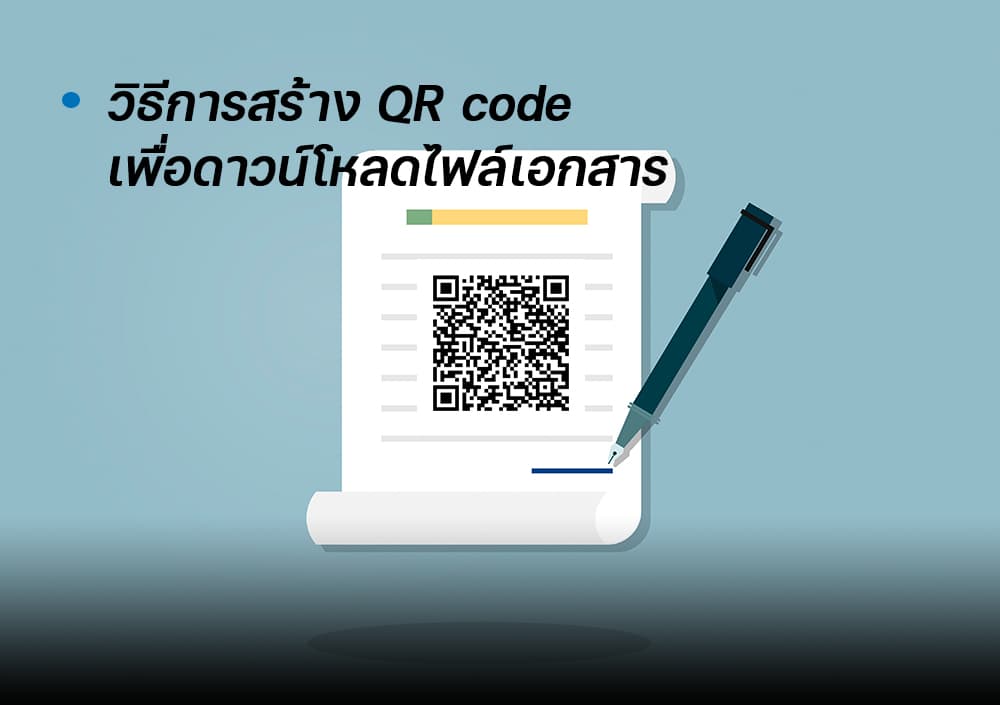Pussy888 พุซซี่888 มาทำความรู้จักกับเว็บไซต์สล็อตออนไลน์ค่ายใหญ่แห่งนี้ตูด
Pussy888 เป็นเกมการเดิมพันที่ได้รับความนิยมอย่างมาก โดยในเว็บของพวกเราเป็นเว็บที่การพนันสล็อตออนไลน์ pussy888 ที่มีความครบครันมากที่สุด พวกเรามีทั้งโปรโมชั่นจัดเตรียมให้กับนักเดิมพันอยู่ตลอด ทั้งยังยังมีการจัดเตรียมเกมการพนันสล็อตออนไลน์ที่อัพเดทรูปแบบใหม่ มาให้นักเดิมพันได้ใช้บริการผ่านทางเว็บของพวกเราโดยไม่ต้องเสียค่าธรรมเนียม พุซซี่888 การใช้งานเกมการเดิมพันสล็อตออนไลน์ผ่านทางเว็บนี้ นักพนันจะได้เล่นเกมส์การพนันที่มีคุณภาพ ของการออกรางวัลรวมทั้งช่วยทำให้คุณสำเร็จแม้กระนั้นการลงเดิมพันสล็อตออนไลน์ แน่ๆว่าการลงเดิมพันเกมสล็อตออนไลน์บนเว็บนี้ จะช่วยให้นักพนันได้สัมผัสกับการเล่นเกมสล็อตออนไลน์ที่มีรูปแบบใหม่
พุซซี่888 pussy888 โลกแห่งการเดิมพันเว็บไซต์สล็อตออนไลน์ขนาดใหญ่
พุซซี่888 เรากล่าวได้ว่าเป็นโลกที่การเดิมพันที่มีขนาดใหญ่เยอะที่สุด โดยมีนักเดิมพันมากที่เข้ามาค้นหาเกมการพนันที่เหมาะสมกับตนเอง ซึ่งในเว็บของเราก็มีเกมการพนันสล็อตออนไลน์ใส่ไว้มากกว่า 500 รายการ นักพนันสามารถทดลองเล่นเกมเหล่านั้นได้ฟรี ทั้งยังสามารถลงเดิมพันเกมสล็อตออนไลน์บนเว็บของพวกเราได้อย่างไร้ขีดจำกัด การลงพนันเกมสล็อตออนไลน์ สล็อต ที่มีคุณภาพ จะช่วยให้นักพนันรู้สึกครึกครื้นรวมทั้งสามารถได้รับเงินรางวัล จากการเล่นเกมพนันออนไลน์ที่เรียกว่าสล็อต เกมส์การพนัน ชนิดนี้เป็นที่นิยมอย่างยิ่ง ไม่ว่าจะในระบบของออนไลน์ หรือในสมัยก่อนที่จะมีให้บริการตามบ่อนหรือคาสิโน รวมถึงเซอร์วิสอพาร์ทเม้นท์หรือสถานที่ต่างๆการลงพนันเกมสล็อตออนไลน์นับว่าเป็นอีกหนึ่งเกมการเดิมพันที่ไม่ว่าใครก็ต่างเชื่อใจแล้วก็เลือกใช้งาน เพราะเป็นเกมที่เล่นง่ายได้เงินเร็วทราบผลวินิจฉัยแพ้ชนะทันใจ ก็เลยทำให้เกมนี้เป็นเกมการเดิมพันที่อยู่คู่กับวงการพนันมาอย่างนาน
รวมเครือข่ายเกมคาสิโนออนไลน์ครบวงจร เล่นสล็อตออนไลน์ พุซซี่888 ไม่มีสะดุด
เว็บไซต์ของพวกเรามีบริการเครือข่ายเกมสล็อตออนไลน์เยอะมาก โดยไม่ว่านักเดิมพันจะเข้าร่วมลงเดิมพันเกมสล็อตออนไลน์ผ่านทางหน้าเว็บไซต์ สล็อต หรือจะกระทำการจัดตั้งแอพพลิเคชันเพื่อเล่นเกมสล็อตออนไลน์ก็สามารถทำได้เช่นเดียวกัน กล่าวได้ว่าไม่ว่าคุณจะอยู่ที่ใดเมื่อใดก็สามารถลงพนันเกมสล็อตออนไลน์ได้อย่างครบวงจร การลงพนันเกมสล็อตออนไลน์บนเว็บของพวกเราจะช่วยทำให้คุณสนุกเพลิดเพลิน ช่วยฆ่าเวลาให้กับผู้ที่มีเวลาว่างมากแม้กระนั้นไม่ทราบว่าจะทำอะไร การลงพนันเกมสล็อตออนไลน์ก็ถือว่าเป็นการสร้างรายได้ในช่วงว่างอีกหนึ่งแบบ ที่ไม่ต้องลงทุนมากแค่เพียงมีมือถือหรือเครื่องไม้เครื่องมือที่สามารถเชื่อมต่อกับอินเทอร์เน็ต ก็สามารถลงพนันเกมการเดิมพันพวกนั้นรวมทั้งสร้างรายได้อย่างมากมาย รับเงินมากจากทางการเล่นเกมสล็อตออนไลน์ผ่านทางเว็บไซต์ของเราได้นั่นเอง
เล่นสล็อตออนไลน์ พุซซี่888 ทุนน้อย รับโปรโมชั่นสุดพิเศษตลอดการใช้งาน
ในเว็บของเรามีตัวช่วยให้กับนักพนัน โดยเรามีการแจกเครดิตฟรีรวมทั้งโปรโมชั่นให้กับสมาชิกที่ร่วมลงพนันกับเว็บไซต์ของพวกเราอยู่เสมอ การเข้าร่วมลงพนันกับทางเว็บของเรามีแต่ความคุ้มค่า ในตัวเกมการเดิมพัน นอกเหนือจากที่จะมีโบนัสรวมทั้งรางวัลในตัวเกมส์แล้วนั้น เครดิตฟรีที่ดินเว็บของเราเตรียมไว้ให้ ก็จะช่วยลดช่วงเวลาในการเล่นเกมสล็อตออนไลน์รวมทั้งบรรลุผลสำเร็จได้มากยิ่งขึ้น จากการลงพนันเกมสล็อตออนไลน์ผ่านทางเว็บไซต์นี้
เว็บสล็อต พุซซี่888 รองรับวัสดุอุปกรณ์การพนันทุกแบบ เข้าใช้งานสะดวกสบาย
เว็บของเรามีมากมายช่องทางอย่างที่กล่าวไปก่อนหน้านี้ ถ้าหากนักพนันต้องการลงพนันเกมสล็อตออนไลน์สามารถใช้งานผ่าน ปากทางเข้าเล่น สล็อตของเราซึ่งเป็นหนทางซึ่งสามารถเข้าถึงเกมการพนันสล็อตออนไลน์ได้อย่างสะดวกสบาย นักพนันสามารถใช้บริการเกมสล็อตออนไลน์ผ่านทางเว็บไซต์ของเราได้ผ่านวัสดุอุปกรณ์การพนันทุกรูปแบบ เพราะเหตุว่าเรามีระบบที่สามารถรองรับการเข้าถึงเกมการพนันสล็อตออนไลน์อย่างเต็มคุณภาพ ได้ผ่านเครื่องไม้เครื่องมืออิเล็กทรอนิกส์ที่มีความทันสมัย เพราะเหตุว่าระบบบนเว็บของพวกเรามีความก้าวล้ำในเรื่องของเทคโนโลยี เราจึงรองรับเครื่องไม้เครื่องมือกรรมเดิมพันทุกรูปแบบที่เล่นเกมสล็อตออนไลน์ได้ นั้นช่วยให้นักพนันสามารถลงเดิมพันได้อย่างง่ายดาย และหันมาใช้บริการกับทางเว็บไซต์ของพวกเราเพิ่มมากขึ้นนั่นเอง
ทำใมพวกเราถึงเป็นที่นิยมสูงที่สุดในแวดวง
ระดับความพอใจในเกมสล็อตออนไลน์ Pussy888 สล็อต อาจแตกต่างกันอย่างยิ่งในแต่ละคน เพราะว่าขึ้นอยู่กับความชื่นชอบและก็ประสบการณ์การเล่นเกมของแต่ละคน นี่คือต้นสายปลายเหตุบางประการที่อาจจะก่อให้ Pussy888 พุซซี่888 น่าดึงดูด
• ลงทะเบียนเป็นสมาชิกเข้าใช้บริการฟรีไม่มีอย่างน้อย
• ฝากถอนทำรายการทันใจ
• เข้าถึงง่ายมีระบบระเบียบรองรับนานัปการ
• เล่นง่ายไม่ต้องโยกกระเป๋า
• จัดตั้งแอพพลิเคชั่นลงบนมือถือก็สามารถเล่นได้เหมือนกัน
• แจกโบนัสแรกเข้าไม่ยั้ง
เรายังมีสิ่งที่น่าสนใจที่ทำให้ล่อใจผู้ใช้งานอีกเยอะแยะ ลองสมัครสมาชิกเข้ามาใช้งานกับทางเว็บนี้ดู เพื่อเปิดประสบการณ์ใหม่ของการเดิมพันเกมสล็อตออนไลน์ pussy888 ที่เยี่ยมที่สุด หนทางทำกำไรที่พิจารณาถึงผู้รับบริการเป็นอันดับแรก สมัครเป็นสมาชิกวันนี้ได้กำไรมหาศาล หากแม้ลงเดิมพันด้วยทุนน้อย
ดาวน์โหลด พุชชี่888 pussy888 บริการ 24 ชั่วโมง 24 SEP 2566 Leonard โอนเงินสด สล็อตรางวัลแจ็คพอต Top 92
 ขอขอบคุณอ้างอิง พุซซี่888
ขอขอบคุณอ้างอิง พุซซี่888


 อุบายแนวทางการของสูตรนี้ก็ง่ายมาก เป็นแทงบอลในช่วง 15 นาทีด้านหลังของ ‘ครึ่งแรก’ ขอย้ำเพื่อไม่ให้นักเสี่ยงดวงพลาด ‘15 นาทีด้านหลังของครึ่งแรก’ โดยบอลช่วง 15 นาทีด้านหลังครึ่งแรก ราคาสูง-ต่ำจะอยู่ประมาณที่ 1.5เป็นแทง 100 ได้ 50 บาท ไม่รวมทุน ถ้าคุณลงเงินพนันไปที่ 1000 จบ 15 นาทีด้านหลังครึ่งแรก ถ้าเกิดไม่มีการทำประตูเพิ่ม คุณรับทันทีครับผม 500 บาท ถ้าโดนทบเพิ่มเป็น 3 เท่า (เสมือนเล่นสูตรวางกั๊กรูเล็ต) ถ้ามันจะยิงกัน 15 นาทีด้านหลังทุกคู่ก็ให้มันรู้ไป
อุบายแนวทางการของสูตรนี้ก็ง่ายมาก เป็นแทงบอลในช่วง 15 นาทีด้านหลังของ ‘ครึ่งแรก’ ขอย้ำเพื่อไม่ให้นักเสี่ยงดวงพลาด ‘15 นาทีด้านหลังของครึ่งแรก’ โดยบอลช่วง 15 นาทีด้านหลังครึ่งแรก ราคาสูง-ต่ำจะอยู่ประมาณที่ 1.5เป็นแทง 100 ได้ 50 บาท ไม่รวมทุน ถ้าคุณลงเงินพนันไปที่ 1000 จบ 15 นาทีด้านหลังครึ่งแรก ถ้าเกิดไม่มีการทำประตูเพิ่ม คุณรับทันทีครับผม 500 บาท ถ้าโดนทบเพิ่มเป็น 3 เท่า (เสมือนเล่นสูตรวางกั๊กรูเล็ต) ถ้ามันจะยิงกัน 15 นาทีด้านหลังทุกคู่ก็ให้มันรู้ไป

 ในสมัยที่เทคโนโลยีเริ่มเข้ามามีหน้าที่มากยิ่งขึ้นในชีวิตประจำวันของเรานั้น ความสบายสบาย ความรวดเร็ว และความทันสมัยต่างๆก็มีเยอะขึ้นเรื่อยๆ ส่งผลให้เทคโนโลยีหรือนวัตกรรมเก่าๆบางสิ่งบางอย่างนั้นถูกแทนที่ พัฒนา หรือสูญหายไปเลยก็ว่าได้ครับ อย่างเช่น การเข้ามาของแฟลชไดรฟ์ที่ทดแทนฟลอปปี้ดิสก์หรือที่เราเรียกกันอย่างติดปากว่า แผ่นดิสก์
ในสมัยที่เทคโนโลยีเริ่มเข้ามามีหน้าที่มากยิ่งขึ้นในชีวิตประจำวันของเรานั้น ความสบายสบาย ความรวดเร็ว และความทันสมัยต่างๆก็มีเยอะขึ้นเรื่อยๆ ส่งผลให้เทคโนโลยีหรือนวัตกรรมเก่าๆบางสิ่งบางอย่างนั้นถูกแทนที่ พัฒนา หรือสูญหายไปเลยก็ว่าได้ครับ อย่างเช่น การเข้ามาของแฟลชไดรฟ์ที่ทดแทนฟลอปปี้ดิสก์หรือที่เราเรียกกันอย่างติดปากว่า แผ่นดิสก์
 …
… 1. โปรโมชั่น โปรทุนน้อย ฝาก 40 รับ 100
1. โปรโมชั่น โปรทุนน้อย ฝาก 40 รับ 100 3. โปรโมชั่นดี พี่จะรับป้ะ?
3. โปรโมชั่นดี พี่จะรับป้ะ? เป็นไงบ้างครับกับ โปรทุนน้อย ฝาก 40 รับ 100 จาก ทางเข้า 918kiss ถ้าหากเป็นคุณจะรับไหมล่ะขอรับ? ฮ่า… อย่างที่
เป็นไงบ้างครับกับ โปรทุนน้อย ฝาก 40 รับ 100 จาก ทางเข้า 918kiss ถ้าหากเป็นคุณจะรับไหมล่ะขอรับ? ฮ่า… อย่างที่ สล็อตเล่นฟรี โหลด918kissล่าสุด https://918vip.co 8 ธันวา 2022 Victor
สล็อตเล่นฟรี โหลด918kissล่าสุด https://918vip.co 8 ธันวา 2022 Victor  ในวันนี้เป็นจังหวะอันดีที่เว็บไซต์ ดูหนังใหม่ ดูหนังออนไลน์ 2023 ดูหนังออนไลน์ 2023 หนังออนไลน์ 2566 ของพวกเรา movieskub จะได้เฉิดฉันแสงกันแบบบ้าระห่ำ พร้อมหนังงใหม่ชนโรงประสิทธิภาพหนังโรงแบบจัดหนักจัดเต็มกันเลยทีเดียว เดี๋ยวพวกเรา เว็บ ดูหนังใหม่ ดูหนังออนไลน์ 2023 หนังออนไลน์ 2566 movieskub จะบอกคุณลักษณะของเว็บไซต์ ดูหนังใหม่ ดูหนังผ่านเน็ต 2023 หนังออนไลน์ 2566 ที่ดีให้กับทุกคนได้รับทราบกันอย่างทั่วถึงเองจ้า บอกเลยว่า ที่เราจะบอกทุกท่านไปทั้งหมดนี่ เว็บ ดูหนังใหม่ ดูหนังออนไลน์ 2023 หนังออนไลน์ 2566 ของเรา movieskub มีครบจบในที่เดียวเลยน้า เริ่มเลอ
ในวันนี้เป็นจังหวะอันดีที่เว็บไซต์ ดูหนังใหม่ ดูหนังออนไลน์ 2023 ดูหนังออนไลน์ 2023 หนังออนไลน์ 2566 ของพวกเรา movieskub จะได้เฉิดฉันแสงกันแบบบ้าระห่ำ พร้อมหนังงใหม่ชนโรงประสิทธิภาพหนังโรงแบบจัดหนักจัดเต็มกันเลยทีเดียว เดี๋ยวพวกเรา เว็บ ดูหนังใหม่ ดูหนังออนไลน์ 2023 หนังออนไลน์ 2566 movieskub จะบอกคุณลักษณะของเว็บไซต์ ดูหนังใหม่ ดูหนังผ่านเน็ต 2023 หนังออนไลน์ 2566 ที่ดีให้กับทุกคนได้รับทราบกันอย่างทั่วถึงเองจ้า บอกเลยว่า ที่เราจะบอกทุกท่านไปทั้งหมดนี่ เว็บ ดูหนังใหม่ ดูหนังออนไลน์ 2023 หนังออนไลน์ 2566 ของเรา movieskub มีครบจบในที่เดียวเลยน้า เริ่มเลอ 1. โปรโมทไม่เกะกะดวงตา บอกเลยข้อนี้ ดูหนังออนไลน์ 2023 คนไหนกันแน่ก็อยากได้ ถ้าไม่ได้มองในแอพเสียตังนะ ไม่มีวันจะได้แบบเว็บของพวกเรา ด้วยเหตุว่าพวกเราจัดการให้ประชาสัมพันธ์อยู่ในที่ที่ควรอยู่ ทุกคนอยากดูอะไรกดมองได้เอง โดยที่โฆษณาในเว็บ ดูหนังใหม่ ดูหนังออนไลน์ 2023 หนังออนไลน์ 2566 ของพวกเราเรา movieskub จะไม่บังคับให้ทุกท่านมองโปรโมทกันมั่วๆราวกับเว็บดูหนังอื่นๆอย่างแน่นอนจ้า
1. โปรโมทไม่เกะกะดวงตา บอกเลยข้อนี้ ดูหนังออนไลน์ 2023 คนไหนกันแน่ก็อยากได้ ถ้าไม่ได้มองในแอพเสียตังนะ ไม่มีวันจะได้แบบเว็บของพวกเรา ด้วยเหตุว่าพวกเราจัดการให้ประชาสัมพันธ์อยู่ในที่ที่ควรอยู่ ทุกคนอยากดูอะไรกดมองได้เอง โดยที่โฆษณาในเว็บ ดูหนังใหม่ ดูหนังออนไลน์ 2023 หนังออนไลน์ 2566 ของพวกเราเรา movieskub จะไม่บังคับให้ทุกท่านมองโปรโมทกันมั่วๆราวกับเว็บดูหนังอื่นๆอย่างแน่นอนจ้า
 รีวิวเกม Plushie Frenzy สล็อต168
รีวิวเกม Plushie Frenzy สล็อต168 2. สัญลักษณ์และก็อัตราการจ่ายเงินรางวัลที่จำเป็นต้องรู้
2. สัญลักษณ์และก็อัตราการจ่ายเงินรางวัลที่จำเป็นต้องรู้.png)

 สวัสดีครับผมชาว 918kiss ทุกท่าน ในตอนอาทิตย์ที่แล้ว ทางเราได้เห็นปัญหาที่เกิดขึ้นกับการแบน URL ของผู้ให้บริการอินเตอร์เน็ตหลายๆค่าย ไม่ว่าจะเป็นทรู ดีแทค หรือเอไอเอส เรียกว่าแบนกันรัว ปากทางเข้า
สวัสดีครับผมชาว 918kiss ทุกท่าน ในตอนอาทิตย์ที่แล้ว ทางเราได้เห็นปัญหาที่เกิดขึ้นกับการแบน URL ของผู้ให้บริการอินเตอร์เน็ตหลายๆค่าย ไม่ว่าจะเป็นทรู ดีแทค หรือเอไอเอส เรียกว่าแบนกันรัว ปากทางเข้า  เว็บสล็อต โบนัสแตกง่ายดาย ทุนต่ำ ร่ำรวยไม่ยากกับ Punpro777
เว็บสล็อต โบนัสแตกง่ายดาย ทุนต่ำ ร่ำรวยไม่ยากกับ Punpro777 นักพนันท่านไหน ที่กำลังตามหาเกม เครดิตฟรี โบนัสแตกง่าย พวกเราขอแนะนำให้แด่ท่านเข้ามาใช้บริการ ผู้ให้บริการเกมได้รับความนิยมจากค่ายชั้นยอด ซึ่งหมายถึงเกม สล็อตเว็บไซต์ตรง แตกง่าย pg ทุนต่ำก็สามารถเข้าเล่นได้ แถมยังบางทีอาจจะทำเงินก้อนโตได้แบบสบายๆอีกด้วย เนื่องจากว่าเกมสล็อตทุกเกม มีแจ็คพอตที่ออกหลายที และก็เพราะว่าเป็นเกม สล็อตแตกง่ายเว็บไซต์ตรง ก็เลยทำให้เกมสล็อตของทางพวกเรานั้น กำลังเป็นที่พึงพอใจอย่างยิ่งในตอนนี้ ซึ่งเราแน่ใจว่าหากนักเสี่ยงโชคท่านไหนที่ชื่นชอบ เล่นเกมสล็อตอยู่เป็นประจำ จำต้องถูกใจเป็นอย่างแน่นอน ถ้าหากได้เข้าเล่นเกมกับ punpro777.com
นักพนันท่านไหน ที่กำลังตามหาเกม เครดิตฟรี โบนัสแตกง่าย พวกเราขอแนะนำให้แด่ท่านเข้ามาใช้บริการ ผู้ให้บริการเกมได้รับความนิยมจากค่ายชั้นยอด ซึ่งหมายถึงเกม สล็อตเว็บไซต์ตรง แตกง่าย pg ทุนต่ำก็สามารถเข้าเล่นได้ แถมยังบางทีอาจจะทำเงินก้อนโตได้แบบสบายๆอีกด้วย เนื่องจากว่าเกมสล็อตทุกเกม มีแจ็คพอตที่ออกหลายที และก็เพราะว่าเป็นเกม สล็อตแตกง่ายเว็บไซต์ตรง ก็เลยทำให้เกมสล็อตของทางพวกเรานั้น กำลังเป็นที่พึงพอใจอย่างยิ่งในตอนนี้ ซึ่งเราแน่ใจว่าหากนักเสี่ยงโชคท่านไหนที่ชื่นชอบ เล่นเกมสล็อตอยู่เป็นประจำ จำต้องถูกใจเป็นอย่างแน่นอน ถ้าหากได้เข้าเล่นเกมกับ punpro777.com ขอขอบคุณมากby
ขอขอบคุณมากby  …
… บาคาร่าออนไลน์เว็บไหนดี บาคาร่า sexybaccarat168 www.sexybaccarat168.com 12 สิงหา 2022 บาคาร่าเว็บตรง บาคาร่าคือป๊อก 8 ป๊อก 9 ที่เมิงเคยเล่นนั่นแหละ คนนิยมเล่นบาคาร่า168 บาคาร่า888 และ บาคาร่า1688 กันเยอะ เพราะบาคาร่าออนไลน์ได้เงินจริง สำหรับคนที่กำลังมองหาเกมที่ทำงานลงทุน บาคาร่า ให้รับความตื่นเต้น และก็ความเข้าใจสำหรับเพื่อการใช้งานเราขอทำเสนอแนะเกมดึงดูดใจบาคาร่าให้เป็นตัวเลือกสำหรับเพื่อการลงทุนของท่านเพราะเก่ง เกมบาคาร่าถือได้ว่าเป็นเกมยอดนิยมที่ไม่ต้องลงทุนกระทำเลือกใช้งานกันเยอะที่สุด เพราะเหตุว่าเป็นเกมที่สามารถสร้างผลอย่างเช่นทุนได้จริง แล้วในเวลานี้ยังสามารถกระทำการใช้งานผ่านเว็บไซต์ที่เปิดให้บริการได้ทำเดินทางถือเป็นการเข้าถึงที่สะดวกแล้วก็รวดเร็วหากผู้ใดกันแน่พึงพอใจสามารถทำการลงทะเบียนสมัครสมาชิกได้ตามเว็บที่ท่านมีความคิดว่ามีความปลอดภัยรวมทั้งเหมาะสมต่อการลงทุนของท่านเยอะที่สุด
บาคาร่าออนไลน์เว็บไหนดี บาคาร่า sexybaccarat168 www.sexybaccarat168.com 12 สิงหา 2022 บาคาร่าเว็บตรง บาคาร่าคือป๊อก 8 ป๊อก 9 ที่เมิงเคยเล่นนั่นแหละ คนนิยมเล่นบาคาร่า168 บาคาร่า888 และ บาคาร่า1688 กันเยอะ เพราะบาคาร่าออนไลน์ได้เงินจริง สำหรับคนที่กำลังมองหาเกมที่ทำงานลงทุน บาคาร่า ให้รับความตื่นเต้น และก็ความเข้าใจสำหรับเพื่อการใช้งานเราขอทำเสนอแนะเกมดึงดูดใจบาคาร่าให้เป็นตัวเลือกสำหรับเพื่อการลงทุนของท่านเพราะเก่ง เกมบาคาร่าถือได้ว่าเป็นเกมยอดนิยมที่ไม่ต้องลงทุนกระทำเลือกใช้งานกันเยอะที่สุด เพราะเหตุว่าเป็นเกมที่สามารถสร้างผลอย่างเช่นทุนได้จริง แล้วในเวลานี้ยังสามารถกระทำการใช้งานผ่านเว็บไซต์ที่เปิดให้บริการได้ทำเดินทางถือเป็นการเข้าถึงที่สะดวกแล้วก็รวดเร็วหากผู้ใดกันแน่พึงพอใจสามารถทำการลงทะเบียนสมัครสมาชิกได้ตามเว็บที่ท่านมีความคิดว่ามีความปลอดภัยรวมทั้งเหมาะสมต่อการลงทุนของท่านเยอะที่สุด ถ้ากล่าวถึงเกมส์การลงทุนการพนันที่อยู่ในหมวดของคาสิโนแดนยอดนิยมเยอะที่สุดก็น่าจะเป็นเกมบาคาร่าสำหรับที่ไปที่มาของเกมบาคาร่านั้นเป็นความนิยมของ บาคาร่าซึ่งเดี๋ยวนี้สามารถทำการใช้งานผ่านระบบออนไลน์ได้ซึ่งนับว่าพวกเราสามารถเข้าถึงการลงทุนได้ง่ายแล้วก็สะดวกเพิ่มมากขึ้น เพราะว่าในอดีตกาลนักลงทุนต้องกระทำเดินทางไปสถานที่ที่เปิดให้บริการแต่ว่าขณะนี้ทหารมีความต้องการทางการใช้งานก็เพียงทำการลงทะเบียนสมัครสมาชิกเพียงแค่ไม่ถึง 10 นาทีก็สามารถทำใช้งานได้แล้วเนื่องจากกรรมวิธีการสมัครไม่ได้ยุ่งยากเหมือนอย่างที่คิดเลยแล้วก็ภูมิหลังของเกมบาคาร่านั้นมีความนิยมชมชอบรวมทั้งเป็นเกมเบิกบานที่ได้เริ่มมาจากประเทศอเมริกาตั้งแต่ปีคริสตศักราช 1914 ถึง 1922แล้วก็บวกกับเป็นเกมส์ในรูปแบบของการเดิมพันจึงเป็นที่นิยม เพิ่มมากขึ้นเรื่อยๆอย่างต่อเนื่อง เนื่องจากว่าเกมบาคาร่าที่เป็นเกมส์พนันนั้นสามารถสร้างรายได้ให้แก่นัมายากลงทุนได้จึงทำให้นักลงทุนนั้นนิยมกระทำการใช้งานถ้าหากคนไหนสนใจจัดการการลงทุนรวมทั้งยังไม่รู้จักว่ากระทำการสมัครเป็นสมาชิกของเว็บไหนถ้าหากสามารถกระทำลงทะเบียนสมัครสมาชิกของ เว็บไซต์คาสิโนออนไลน์ที่เปิดให้เล่นเกี่ยวกับเกมบาคาร่าได้ คาสิโนออนไลน์ บาคาร่า sexybaccarat168 ในรูปแบบใหม่ที่ฉีกกฎเดิมๆจากที่เคยเห็นมาก่อน การแจกไพ่โดยดีลเลอร์สาวสวยทั้งโลกมารวมไว้ที่นี่ สิ่งที่สมาชิกจะได้รับไม่ใช้เป็นเพียงแค่อาหารตาแค่นั้น แต่ว่ายังมีความคมชัด ความเที่ยงตรงของระบบที่ถูกสรรค์สร้างภายใต้คณะทำงานบริษัทผู้พัฒนาซอฟแวร์และก็ทีมงานเกมมิ่งระดับนานาชาติมารอควบคุมระบบข้างหลังบ้าน บาคาร่าออนไลน์ เกมส์ไพ่ยอดฮิตตลอดไปพร้อมพนันไลฟ์สดสัมผัสประสบการณ์เดิมพันเรียลไทม์มีลักษณะคล้ายกับการเล่นไพ่ป๊อกกระเด้ง ร่วมบันเทิงใจเล่นพนันได้ตลอดใช้บริการได้สม่ำเสมอ ลุ้นรับโบนัสฟรี
ถ้ากล่าวถึงเกมส์การลงทุนการพนันที่อยู่ในหมวดของคาสิโนแดนยอดนิยมเยอะที่สุดก็น่าจะเป็นเกมบาคาร่าสำหรับที่ไปที่มาของเกมบาคาร่านั้นเป็นความนิยมของ บาคาร่าซึ่งเดี๋ยวนี้สามารถทำการใช้งานผ่านระบบออนไลน์ได้ซึ่งนับว่าพวกเราสามารถเข้าถึงการลงทุนได้ง่ายแล้วก็สะดวกเพิ่มมากขึ้น เพราะว่าในอดีตกาลนักลงทุนต้องกระทำเดินทางไปสถานที่ที่เปิดให้บริการแต่ว่าขณะนี้ทหารมีความต้องการทางการใช้งานก็เพียงทำการลงทะเบียนสมัครสมาชิกเพียงแค่ไม่ถึง 10 นาทีก็สามารถทำใช้งานได้แล้วเนื่องจากกรรมวิธีการสมัครไม่ได้ยุ่งยากเหมือนอย่างที่คิดเลยแล้วก็ภูมิหลังของเกมบาคาร่านั้นมีความนิยมชมชอบรวมทั้งเป็นเกมเบิกบานที่ได้เริ่มมาจากประเทศอเมริกาตั้งแต่ปีคริสตศักราช 1914 ถึง 1922แล้วก็บวกกับเป็นเกมส์ในรูปแบบของการเดิมพันจึงเป็นที่นิยม เพิ่มมากขึ้นเรื่อยๆอย่างต่อเนื่อง เนื่องจากว่าเกมบาคาร่าที่เป็นเกมส์พนันนั้นสามารถสร้างรายได้ให้แก่นัมายากลงทุนได้จึงทำให้นักลงทุนนั้นนิยมกระทำการใช้งานถ้าหากคนไหนสนใจจัดการการลงทุนรวมทั้งยังไม่รู้จักว่ากระทำการสมัครเป็นสมาชิกของเว็บไหนถ้าหากสามารถกระทำลงทะเบียนสมัครสมาชิกของ เว็บไซต์คาสิโนออนไลน์ที่เปิดให้เล่นเกี่ยวกับเกมบาคาร่าได้ คาสิโนออนไลน์ บาคาร่า sexybaccarat168 ในรูปแบบใหม่ที่ฉีกกฎเดิมๆจากที่เคยเห็นมาก่อน การแจกไพ่โดยดีลเลอร์สาวสวยทั้งโลกมารวมไว้ที่นี่ สิ่งที่สมาชิกจะได้รับไม่ใช้เป็นเพียงแค่อาหารตาแค่นั้น แต่ว่ายังมีความคมชัด ความเที่ยงตรงของระบบที่ถูกสรรค์สร้างภายใต้คณะทำงานบริษัทผู้พัฒนาซอฟแวร์และก็ทีมงานเกมมิ่งระดับนานาชาติมารอควบคุมระบบข้างหลังบ้าน บาคาร่าออนไลน์ เกมส์ไพ่ยอดฮิตตลอดไปพร้อมพนันไลฟ์สดสัมผัสประสบการณ์เดิมพันเรียลไทม์มีลักษณะคล้ายกับการเล่นไพ่ป๊อกกระเด้ง ร่วมบันเทิงใจเล่นพนันได้ตลอดใช้บริการได้สม่ำเสมอ ลุ้นรับโบนัสฟรี สำหรับเว็บ บาคาร่าออนไลน์ sexybaccarat168.com Top 207 Estela ที่เปิดให้เล่นสำหรับบาคาร่าออนไลน์ก็มีหลากหลายเว็บไซต์ก็สามารถกระทำตรวจสอบมองได้ว่าเรามีความต้องการทางการใช้งานเว็บไหนเว็บไซต์ไหนที่มีวิธีการสำหรับการให้บริการที่สามารถตอบโจทย์ความต้องการของพวกเราได้ ถ้าสามารถตอบโจทย์ในสิ่งที่ต้องการของพวกเราได้เป็นเว็บที่มีความปลอดภัยมีความน่าเชื่อถือสำหรับการให้บริการก็สามารถดำเนินขั้นตอนต่อไปก็คือแนวทางการลงทะเบียนเป็นสมาชิกเพื่อทำลงทุนต้นสายปลายเหตุที่ดินเว็บไซต์ควรจะมีกรรมวิธีลงทะเบียนเป็นสมาชิกซึ่งก็คือเพื่อปกป้องรักษาความปลอดภัยสำหรับการใช้งานของนักลงทุนรวมทั้งตัวของผมใช้เองรวมทั้งอยากได้ค่าสมาชิกที่จะกระทำใช้งานจริงๆด้วยเหตุว่าถ้ายังเป็นผู้เล่นที่ไม่มีประสบการณ์สำหรับการใช้งานผ่านระบบออนไลน์จึงควรศึกษาข้อมูลเพื่อเตรียมความพร้อมสำหรับการใช้งานรวมทั้งการใช้แรงงานของท่านผ่านระบบออนไลน์จะได้มากยิ่งขึ้นถึงแม้ว่าท่านจะเป็นผู้เล่นมือใหม่ที่ยังไม่มีประสบการณ์สำหรับการลงทุนก็ตามทีท่านจะสามารถกระทำการใช้งานไม่ให้เกิดข้อบกพร่องได้อย่างแน่นอนเลือกหนทางสำหรับในการลงทุนและก็เราจะสามารถทำการลงทุนในช่องทางที่พวกเราถนัดได้แต่ละวิถีทางสำหรับในการลงทุนก็จะมีจุดเด่นข้อเสียสำหรับเพื่อการใช้งานที่ต่างกันออกไปแม้กระนั้นสิ่งที่มีความหมายที่สุดมันก็คือการเลือกผู้ให้บริการที่มีความปลอดภัยเพื่อการลงทุนที่ได้โอกาสบรรลุความสำเร็จมากขึ้นในการใช้งาน รวมปากทางเข้าเล่นpg slot auto ทดสอบเล่นได้ไม่ยากด้วยเหตุว่ามีทั้ง slot โทรศัพท์มือถือใหม่ปัจจุบัน สล็อตเว็บไซต์ตรง 2021 แจกเครดิตฟรีไม่ยั้ง เว็บไซต์ใหม่เปิดใหม่พร้อม มีทั้งยัง Pgslot999.com และก็ Pgslot77.com ยิ่งกว่านั้นยังมี เว็บไซต์สล็อตออนไลน์อีกเยอะมาก ดังเช่น Joker123th.com, Allbet24hr.com, Slotxo24hr.com, Pussy888fun, Avenger98th.com, Hengjing168.com, Tangtem168.com, Alot666.com,
สำหรับเว็บ บาคาร่าออนไลน์ sexybaccarat168.com Top 207 Estela ที่เปิดให้เล่นสำหรับบาคาร่าออนไลน์ก็มีหลากหลายเว็บไซต์ก็สามารถกระทำตรวจสอบมองได้ว่าเรามีความต้องการทางการใช้งานเว็บไหนเว็บไซต์ไหนที่มีวิธีการสำหรับการให้บริการที่สามารถตอบโจทย์ความต้องการของพวกเราได้ ถ้าสามารถตอบโจทย์ในสิ่งที่ต้องการของพวกเราได้เป็นเว็บที่มีความปลอดภัยมีความน่าเชื่อถือสำหรับการให้บริการก็สามารถดำเนินขั้นตอนต่อไปก็คือแนวทางการลงทะเบียนเป็นสมาชิกเพื่อทำลงทุนต้นสายปลายเหตุที่ดินเว็บไซต์ควรจะมีกรรมวิธีลงทะเบียนเป็นสมาชิกซึ่งก็คือเพื่อปกป้องรักษาความปลอดภัยสำหรับการใช้งานของนักลงทุนรวมทั้งตัวของผมใช้เองรวมทั้งอยากได้ค่าสมาชิกที่จะกระทำใช้งานจริงๆด้วยเหตุว่าถ้ายังเป็นผู้เล่นที่ไม่มีประสบการณ์สำหรับการใช้งานผ่านระบบออนไลน์จึงควรศึกษาข้อมูลเพื่อเตรียมความพร้อมสำหรับการใช้งานรวมทั้งการใช้แรงงานของท่านผ่านระบบออนไลน์จะได้มากยิ่งขึ้นถึงแม้ว่าท่านจะเป็นผู้เล่นมือใหม่ที่ยังไม่มีประสบการณ์สำหรับการลงทุนก็ตามทีท่านจะสามารถกระทำการใช้งานไม่ให้เกิดข้อบกพร่องได้อย่างแน่นอนเลือกหนทางสำหรับในการลงทุนและก็เราจะสามารถทำการลงทุนในช่องทางที่พวกเราถนัดได้แต่ละวิถีทางสำหรับในการลงทุนก็จะมีจุดเด่นข้อเสียสำหรับเพื่อการใช้งานที่ต่างกันออกไปแม้กระนั้นสิ่งที่มีความหมายที่สุดมันก็คือการเลือกผู้ให้บริการที่มีความปลอดภัยเพื่อการลงทุนที่ได้โอกาสบรรลุความสำเร็จมากขึ้นในการใช้งาน รวมปากทางเข้าเล่นpg slot auto ทดสอบเล่นได้ไม่ยากด้วยเหตุว่ามีทั้ง slot โทรศัพท์มือถือใหม่ปัจจุบัน สล็อตเว็บไซต์ตรง 2021 แจกเครดิตฟรีไม่ยั้ง เว็บไซต์ใหม่เปิดใหม่พร้อม มีทั้งยัง Pgslot999.com และก็ Pgslot77.com ยิ่งกว่านั้นยังมี เว็บไซต์สล็อตออนไลน์อีกเยอะมาก ดังเช่น Joker123th.com, Allbet24hr.com, Slotxo24hr.com, Pussy888fun, Avenger98th.com, Hengjing168.com, Tangtem168.com, Alot666.com,  เริ่มเล่นบาคาร่าออนไลน์ ครั้งแรกก็ช่วยคุณได้แน่ๆ เชื่อสิคุ้มมากๆ
เริ่มเล่นบาคาร่าออนไลน์ ครั้งแรกก็ช่วยคุณได้แน่ๆ เชื่อสิคุ้มมากๆ ถ้าเกิดคนใดต้องการจะทดลองเล่นแอปฯ บาคาร่าออนไลน์ ที่ต่างกันของแต่ละคน บางคนปรารถนาจจะเล่น เพื่อเอาความเพลิดเพลิน บรรเทาสมองที่อ่อนล้า จากการทำงานมาตลอดวัน หรือบางบุคคลเล่นเพื่อเอาเงินรางวัลจากมัน ไปใช้จ่ายในชีวิตประจำวัน แต่ว่าไม่ว่าจะเหตุผลอะไรก็แล้วแต่มแต่ว่า ขั้นตอนเบื้องต้นพวกเราจึงควรรู้ไว้แล้วก็ประพฤติตามเหมือนกันหมดเป็นหาเว็บ สมัคร sexyauto168.com ได้เลย
ถ้าเกิดคนใดต้องการจะทดลองเล่นแอปฯ บาคาร่าออนไลน์ ที่ต่างกันของแต่ละคน บางคนปรารถนาจจะเล่น เพื่อเอาความเพลิดเพลิน บรรเทาสมองที่อ่อนล้า จากการทำงานมาตลอดวัน หรือบางบุคคลเล่นเพื่อเอาเงินรางวัลจากมัน ไปใช้จ่ายในชีวิตประจำวัน แต่ว่าไม่ว่าจะเหตุผลอะไรก็แล้วแต่มแต่ว่า ขั้นตอนเบื้องต้นพวกเราจึงควรรู้ไว้แล้วก็ประพฤติตามเหมือนกันหมดเป็นหาเว็บ สมัคร sexyauto168.com ได้เลย บาคาร่าออนไลน์ ที่เราสามารถหาเล่นได้ทั้งบนโทรศัพท์เคลื่อนที่รวมถึงคอมพิวเตอร์ ไม่ว่าจะเป็น Window iOS หรือ Android สามารถเล่นได้เหมือนกันหมด แต่ iOS อาจจะเป็นไปได้ว่าจะมีอุปสรรคต่อการเล่นหน่อยนึง แต่ว่าก็สามารถเล่นได้อย่างเดียวกัน การดาวน์โหลดก็สามารถไปโหลดได้ รวมทั้งที่ตรงนี้ก็ไม่ได้มีเพียงแต่ บาคาร่าออนไลน์ แม้กระนั้นยังมีเกมยิงปลา บาคาร่าออนไลน์ออนไลน์ แข่งม้า แล้วหลังจากนั้นก็เกมอื่นๆอีกไม่ต่ำกว่า 100 เกม กล่าวได้ว่า เราเล่นกับเว็บไซต์ เพียงแต่เว็บไซต์เดียว ก็ครอบคลุมการเดิมพันออนไลน์ทั้งสิ้นที่ในโลกนี้มี แล้วหลังจากนั้นก็ที่สำคัญเป็นได้โปรโมชั่นสุดพิเศษจากทางเว็บอีกด้วย
บาคาร่าออนไลน์ ที่เราสามารถหาเล่นได้ทั้งบนโทรศัพท์เคลื่อนที่รวมถึงคอมพิวเตอร์ ไม่ว่าจะเป็น Window iOS หรือ Android สามารถเล่นได้เหมือนกันหมด แต่ iOS อาจจะเป็นไปได้ว่าจะมีอุปสรรคต่อการเล่นหน่อยนึง แต่ว่าก็สามารถเล่นได้อย่างเดียวกัน การดาวน์โหลดก็สามารถไปโหลดได้ รวมทั้งที่ตรงนี้ก็ไม่ได้มีเพียงแต่ บาคาร่าออนไลน์ แม้กระนั้นยังมีเกมยิงปลา บาคาร่าออนไลน์ออนไลน์ แข่งม้า แล้วหลังจากนั้นก็เกมอื่นๆอีกไม่ต่ำกว่า 100 เกม กล่าวได้ว่า เราเล่นกับเว็บไซต์ เพียงแต่เว็บไซต์เดียว ก็ครอบคลุมการเดิมพันออนไลน์ทั้งสิ้นที่ในโลกนี้มี แล้วหลังจากนั้นก็ที่สำคัญเป็นได้โปรโมชั่นสุดพิเศษจากทางเว็บอีกด้วย …
… Slotxo24hr
Slotxo24hr  ทางเข้า
ทางเข้า 
 …
… เล่นสล็อตต้องที่นี่ PG
เล่นสล็อตต้องที่นี่ PG  1. สมัครฟรี ไร้คุณค่าประเพณี ทุกคนสมาชิกท่านใดพึงพอใจพนันเกมสล็อตออนไลน์ ฟีเจอร์จ่ายกำไรให้สูงที่สุดได้กำไรจริงโดยการเติมถอนผ่านทรูมันนี่ ท่านก็สามารถสมัครใช้งานได้ฟรีไม่จำเป็นที่จะต้องเสียค่าใช้จ่ายในการสมัครหรือค่าธรรมเนียมแรกเข้าอีกด้วยนะคะ
1. สมัครฟรี ไร้คุณค่าประเพณี ทุกคนสมาชิกท่านใดพึงพอใจพนันเกมสล็อตออนไลน์ ฟีเจอร์จ่ายกำไรให้สูงที่สุดได้กำไรจริงโดยการเติมถอนผ่านทรูมันนี่ ท่านก็สามารถสมัครใช้งานได้ฟรีไม่จำเป็นที่จะต้องเสียค่าใช้จ่ายในการสมัครหรือค่าธรรมเนียมแรกเข้าอีกด้วยนะคะ 2. พร้อมให้บริการตลอด 1 วัน ทรูมันนี่เป็นระบบบริการทางด้านการเงินที่พร้อมเปิดให้บริการทั้งวันและก็ช่วงเวลากลางคืน ไม่ว่าจะเป็นวันหยุดราชการหรือวันหยุดประจำชาติ ระบบการเงินแห่งนี้ก็พร้อมบริการทุกท่านตลอดระยะเวลาด้วยออโต้ ล้ำยุคที่รวดเร็วทันใจรวมทั้งแม่นยำที่สุด
2. พร้อมให้บริการตลอด 1 วัน ทรูมันนี่เป็นระบบบริการทางด้านการเงินที่พร้อมเปิดให้บริการทั้งวันและก็ช่วงเวลากลางคืน ไม่ว่าจะเป็นวันหยุดราชการหรือวันหยุดประจำชาติ ระบบการเงินแห่งนี้ก็พร้อมบริการทุกท่านตลอดระยะเวลาด้วยออโต้ ล้ำยุคที่รวดเร็วทันใจรวมทั้งแม่นยำที่สุด
 สล็อตออนไลน์ดีเยี่ยมที่สุด เอาอกเอาใจนักเดิมพัน punpro777 เว็บสล็อต
สล็อตออนไลน์ดีเยี่ยมที่สุด เอาอกเอาใจนักเดิมพัน punpro777 เว็บสล็อต เว็บไซต์สล็อตเป็นอย่างไรที่ทำให้นักพนันต่างติดใจ
เว็บไซต์สล็อตเป็นอย่างไรที่ทำให้นักพนันต่างติดใจ
 …
… สำหรับบทความในวันนี้ ผมก็จำเป็นต้องบอกก่อนว่า ผมคิดอยู่นานแสนนานว่าวันนี้ผมจะมาเขียนเรื่องอะไรดี? ซึ่งจากการที่มีมือใหม่ที่เพิ่งจะเคยเล่นเกมพีจีสล็อตหรือเกมยิงปลาได้ไม่นาน พวกเขาก็ต้องการจะรู้กันนะครับว่า ในฐานะมืออาชีพที่เล่นพีจีสล็อต
สำหรับบทความในวันนี้ ผมก็จำเป็นต้องบอกก่อนว่า ผมคิดอยู่นานแสนนานว่าวันนี้ผมจะมาเขียนเรื่องอะไรดี? ซึ่งจากการที่มีมือใหม่ที่เพิ่งจะเคยเล่นเกมพีจีสล็อตหรือเกมยิงปลาได้ไม่นาน พวกเขาก็ต้องการจะรู้กันนะครับว่า ในฐานะมืออาชีพที่เล่นพีจีสล็อต pg slot ทางเข้า เกมยิงปลา https://Game.fullslotpg.com 5 FEB 2566 Damaris casino เว็บสล็อตอันดับ1เว็บไหนดี Top 86
pg slot ทางเข้า เกมยิงปลา https://Game.fullslotpg.com 5 FEB 2566 Damaris casino เว็บสล็อตอันดับ1เว็บไหนดี Top 86
 แนวเกมนานาประการ ตอบปัญหาคนขี้เบื่อ
แนวเกมนานาประการ ตอบปัญหาคนขี้เบื่อ

 ดูหนังx เว็บไซต์หนังเอวีคลิปมาแรงต้อง
ดูหนังx เว็บไซต์หนังเอวีคลิปมาแรงต้อง  เว็บหนังเอ็กซ์ jubyet69 ดูหนังxของเราจะทำให้ท่านสุขสบาย รู้สึกไม่มีอันตรายเชื่อใจเราได้ ทุกท่านจะสัมผัสได้ถึงความตื่นเต้นและน่าสนใจที่เว็บไซต์ของพวกเรามีให้ทุกคราวเมื่อไหร่ที่ท่านเข้ามาดูเว็บไซต์ของเรา แล้วท่านจะรู้สึกจับใจดวงใจรวมทั้งรู้สึกไม่เป็นอันตรายทุกครั้งและก็สิ่งที่สำคัญที่สุด ซึ่งก็คือ การที่ท่านสามารถแฮปปี้กับเว็บไซต์ของเราได้ในทุกๆครั้ง และสามารถไว้ใจเราได้เสมอ พวกเราจะไม่มีโปรโมทมากมายก่ายกองมากั้นจังหวะการดูวิดีโอมาให้แด่คุณกวนใจอย่างเด็ดขาด ท่านสามารถเลือกดูเรื่องเอวีซับไทยได้ พวกเรามีให้เลือกดู คนไทยกับเอวีซับไทยเป็นของคู่กันจริงล่ะมั้ยค่ะ
เว็บหนังเอ็กซ์ jubyet69 ดูหนังxของเราจะทำให้ท่านสุขสบาย รู้สึกไม่มีอันตรายเชื่อใจเราได้ ทุกท่านจะสัมผัสได้ถึงความตื่นเต้นและน่าสนใจที่เว็บไซต์ของพวกเรามีให้ทุกคราวเมื่อไหร่ที่ท่านเข้ามาดูเว็บไซต์ของเรา แล้วท่านจะรู้สึกจับใจดวงใจรวมทั้งรู้สึกไม่เป็นอันตรายทุกครั้งและก็สิ่งที่สำคัญที่สุด ซึ่งก็คือ การที่ท่านสามารถแฮปปี้กับเว็บไซต์ของเราได้ในทุกๆครั้ง และสามารถไว้ใจเราได้เสมอ พวกเราจะไม่มีโปรโมทมากมายก่ายกองมากั้นจังหวะการดูวิดีโอมาให้แด่คุณกวนใจอย่างเด็ดขาด ท่านสามารถเลือกดูเรื่องเอวีซับไทยได้ พวกเรามีให้เลือกดู คนไทยกับเอวีซับไทยเป็นของคู่กันจริงล่ะมั้ยค่ะ …
… สล็อต44 หาเว็บสล็อตบริการสล็อตออนไลน์สมาชิกใหม่ล่าสุด เว็บไซต์ที่การพนันที่เก็บรวบรวมเกมส์การพนันสล็อตออนไลน์ค่ายดัง มาให้บริการบนเว็บของเราด้วยมาตรฐานระดับสากล ในเว็บไซต์นี้มีเกมการพนันเก็บไว้มากยิ่งกว่า 500 ราย 20 หมวดหมู่ เพื่อรองรับนักเดิมพันให้เข้ามาใช้บริการบนเว็บนี้ ด้วยความครบครันสูงที่สุด โดยในเว็บไซต์ของพวกเราเป็นเว็บไซต์ที่มีข้อดีในเรื่องของการให้บริการ ทั้งยังมีบริการ เกมสล็อตโทรศัพท์เคลื่อนที่
สล็อต44 หาเว็บสล็อตบริการสล็อตออนไลน์สมาชิกใหม่ล่าสุด เว็บไซต์ที่การพนันที่เก็บรวบรวมเกมส์การพนันสล็อตออนไลน์ค่ายดัง มาให้บริการบนเว็บของเราด้วยมาตรฐานระดับสากล ในเว็บไซต์นี้มีเกมการพนันเก็บไว้มากยิ่งกว่า 500 ราย 20 หมวดหมู่ เพื่อรองรับนักเดิมพันให้เข้ามาใช้บริการบนเว็บนี้ ด้วยความครบครันสูงที่สุด โดยในเว็บไซต์ของพวกเราเป็นเว็บไซต์ที่มีข้อดีในเรื่องของการให้บริการ ทั้งยังมีบริการ เกมสล็อตโทรศัพท์เคลื่อนที่  ศูนย์รวมบริการสล็อตออนไลน์ แตกง่ายได้เงินจริง
ศูนย์รวมบริการสล็อตออนไลน์ แตกง่ายได้เงินจริง


 …
… ทุนหลักร้อยถอนหลักหมื่น เล่นเกม PG มีเเต่ได้ ไม่มีเสีย
ทุนหลักร้อยถอนหลักหมื่น เล่นเกม PG มีเเต่ได้ ไม่มีเสีย เว็บ สล็อต แจกทุน ฟรี 2022 เข้าทุกเมื่อเชื่อวัน รวยแต่ละวัน
เว็บ สล็อต แจกทุน ฟรี 2022 เข้าทุกเมื่อเชื่อวัน รวยแต่ละวัน …
… ความน่าสนใจของการสมัครใช้บริการกับเว็บสล็อตออนไลน์ มาตรฐานระดับสากล
ความน่าสนใจของการสมัครใช้บริการกับเว็บสล็อตออนไลน์ มาตรฐานระดับสากล


 ดูหนังx เว็บไซต์หนังอาร์คลิปมาแรงจะต้อง
ดูหนังx เว็บไซต์หนังอาร์คลิปมาแรงจะต้อง 
 pg168 pg168 ธีมสล็อตออนไลน์ยอดนิยมมาแรง แจ็คพอตแตกทุกวัน berving
pg168 pg168 ธีมสล็อตออนไลน์ยอดนิยมมาแรง แจ็คพอตแตกทุกวัน berving pg มีธีมสล็อตอะไรบ้าง pg168
pg มีธีมสล็อตอะไรบ้าง pg168



 Pg สล็อตพีจี สิทธิพิเศษสำหรับเว็บไซต์สล็อตเปิดใหม่ pgslot-1st pg เว็บตรง
Pg สล็อตพีจี สิทธิพิเศษสำหรับเว็บไซต์สล็อตเปิดใหม่ pgslot-1st pg เว็บตรง ขอขอบพระคุณby web
ขอขอบพระคุณby web 

 ขอขอบพระคุณreference
ขอขอบพระคุณreference 

 บาคาร่า888 บาคาร่า Livebar168.com 13 กันยายน 66 Felipa เว็บตรง ซื่อสัตย์ บาคาร่าออนไลน์รวยจริงแน่นอน Top 31
บาคาร่า888 บาคาร่า Livebar168.com 13 กันยายน 66 Felipa เว็บตรง ซื่อสัตย์ บาคาร่าออนไลน์รวยจริงแน่นอน Top 31 ขอขอบพระคุณweb
ขอขอบพระคุณweb 
 4. Fast & Feel Love เร็วชั่วร้าย..ราวกับโกรธคุณ
4. Fast & Feel Love เร็วชั่วร้าย..ราวกับโกรธคุณ


 เว็บหนัง2023 ดูหนังออนไลน์ https://www.moviekece.com 22 พ.ค. 2023 Luz หนังออนไลน์ หนังออนไลน์หนัง2023 Top 87
เว็บหนัง2023 ดูหนังออนไลน์ https://www.moviekece.com 22 พ.ค. 2023 Luz หนังออนไลน์ หนังออนไลน์หนัง2023 Top 87 ขอขอบคุณมากby
ขอขอบคุณมากby 

 เปิดประสบการณ์ใหม่เล่นสล็อตออนไลน์เว็บใหญ่เว็บไซต์ตรง
เปิดประสบการณ์ใหม่เล่นสล็อตออนไลน์เว็บใหญ่เว็บไซต์ตรง  รวมเกมสล็อตมาแรง pg https://www.pgslotx.co 12 May 2566 Hanna แจกเครดิตฟรีไม่อั้น pg slot เปิดใหม่ล่าสุดทางเข้า พีจีสล็อต Top 64
รวมเกมสล็อตมาแรง pg https://www.pgslotx.co 12 May 2566 Hanna แจกเครดิตฟรีไม่อั้น pg slot เปิดใหม่ล่าสุดทางเข้า พีจีสล็อต Top 64 …
… เลือก pg slot เว็บตรง วันนี้ แถมฟรี ความสนุกสนานจากเว็บสล็อตเว็บไซต์ตรงแบบจัดเต็ม!
เลือก pg slot เว็บตรง วันนี้ แถมฟรี ความสนุกสนานจากเว็บสล็อตเว็บไซต์ตรงแบบจัดเต็ม!
 …
… เพราะอะไรจำเป็นต้องลองทดลองเล่นpg ก่อนจะเล่นสล็อตในสนามจริง?
เพราะอะไรจำเป็นต้องลองทดลองเล่นpg ก่อนจะเล่นสล็อตในสนามจริง?
 …
…
 …
…
 pg slot pg slot เว็บตรง สล็อตมาใหม่ไม่ควรพลาด leetgamers
pg slot pg slot เว็บตรง สล็อตมาใหม่ไม่ควรพลาด leetgamers เพราะอะไรจะต้องเลือกเว็บไซต์เล่น pg slot
เพราะอะไรจะต้องเลือกเว็บไซต์เล่น pg slot
 • แทงหวยสด หวยรัฐบาลไทย แน่ๆขอรับว่า นี่เป็นหวยเบสิกที่จะต้องมีของเว็บไซต์หวยสดของเราเลยครับผม หวยรัฐบาลไทยจะออกวันแล้ววันเล่าที่ 1 แล้วก็ 16 ของทุกเดือน อาจมีการเขยื้อนวันไปบ้างในบางเดือน ซึ่งคุณสามารถมาแทงหวยสด 2 ตัว หรือ 3 ตัว กับเราได้เลย
• แทงหวยสด หวยรัฐบาลไทย แน่ๆขอรับว่า นี่เป็นหวยเบสิกที่จะต้องมีของเว็บไซต์หวยสดของเราเลยครับผม หวยรัฐบาลไทยจะออกวันแล้ววันเล่าที่ 1 แล้วก็ 16 ของทุกเดือน อาจมีการเขยื้อนวันไปบ้างในบางเดือน ซึ่งคุณสามารถมาแทงหวยสด 2 ตัว หรือ 3 ตัว กับเราได้เลย • หวยยี่กี หรืออีกชื่อหนึ่งก็คือ ลอตเตอรี่ปิงปอง มีต้นกำเนิดมาจากการเล่นจับยี่กีของประเทศจีน ซึ่งพอเพียงมาอยู่ในต้นแบบหวยออนไลน์ ก็จะเป็นอีกลักษณะหนึ่ง ซึ่งคุณสามารถเล่น 2 รวมทั้ง 3 ตัวได้ดังหวยไทยเลยครับ
• หวยยี่กี หรืออีกชื่อหนึ่งก็คือ ลอตเตอรี่ปิงปอง มีต้นกำเนิดมาจากการเล่นจับยี่กีของประเทศจีน ซึ่งพอเพียงมาอยู่ในต้นแบบหวยออนไลน์ ก็จะเป็นอีกลักษณะหนึ่ง ซึ่งคุณสามารถเล่น 2 รวมทั้ง 3 ตัวได้ดังหวยไทยเลยครับ • เว็บหวยสด หวยมาเลย์ เป็นสลากกินแบ่งที่ออกอย่างถูกกฎหมายของประเทศมาเลเซียนั่นเองครับ จะมีความคล้ายคลึงกับลอตเตอรี่ลาวที่จะออก 4 ตัว แต่คุณสามารถแทง 2 ตัว, 3 ตัว หรือ 4 ตัวได้เลย
• เว็บหวยสด หวยมาเลย์ เป็นสลากกินแบ่งที่ออกอย่างถูกกฎหมายของประเทศมาเลเซียนั่นเองครับ จะมีความคล้ายคลึงกับลอตเตอรี่ลาวที่จะออก 4 ตัว แต่คุณสามารถแทง 2 ตัว, 3 ตัว หรือ 4 ตัวได้เลย
 1. มือถือ ถูกใช้เล่นมากมายเป็นชั้น 1 pg slot เว็บตรง
1. มือถือ ถูกใช้เล่นมากมายเป็นชั้น 1 pg slot เว็บตรง 3. คอมพิวเตอร์ PC,
3. คอมพิวเตอร์ PC,  ไม่ว่าคุณจะมีเครื่องไม้เครื่องมือเเบบไหน สล็อตเล่นผ่านเครื่องมือไหน ดีที่สุด สเป็กสูงหรือต่ำเท่าใด ก็เข้ามาเดิมพันสล็อตออนไลน์ รับความสนุกสนานได้ตั้งเเต่ยามเช้ากระทั่งถึงมืดค่ำ กับเว็บตรงที่ยอดเยี่ยม ได้ตลอดระยะเวลา ดาวน์โหลด ฟรี ลงทะเบียนเป็นสมาชิกใหม่ รับโบนัสฟรี 100% เเจกตรงเน้นย้ำๆกดรับเองไม่ต้องติดข้อจำกัดฝากหรือเเชร์ และขออนุญาตเเนะนำว่า เล่นผ่านมืออวดดีที่สุด เพราะเหตุว่าอยู่ที่แหน่งใดก็จับขึ้นมาเล่นได้ไม่สะดุด สะดวกสุดๆเเม้จะมีเวลาน้อยก็ตาม
ไม่ว่าคุณจะมีเครื่องไม้เครื่องมือเเบบไหน สล็อตเล่นผ่านเครื่องมือไหน ดีที่สุด สเป็กสูงหรือต่ำเท่าใด ก็เข้ามาเดิมพันสล็อตออนไลน์ รับความสนุกสนานได้ตั้งเเต่ยามเช้ากระทั่งถึงมืดค่ำ กับเว็บตรงที่ยอดเยี่ยม ได้ตลอดระยะเวลา ดาวน์โหลด ฟรี ลงทะเบียนเป็นสมาชิกใหม่ รับโบนัสฟรี 100% เเจกตรงเน้นย้ำๆกดรับเองไม่ต้องติดข้อจำกัดฝากหรือเเชร์ และขออนุญาตเเนะนำว่า เล่นผ่านมืออวดดีที่สุด เพราะเหตุว่าอยู่ที่แหน่งใดก็จับขึ้นมาเล่นได้ไม่สะดุด สะดวกสุดๆเเม้จะมีเวลาน้อยก็ตาม  pg soft เว็บตรง pg slot https://pg77slot.com/ 12 ธ.ค. 65 Kory คาสิโนออนไลน์ pg slot เว็บตรงมาแรงที่สุด Top 78
pg soft เว็บตรง pg slot https://pg77slot.com/ 12 ธ.ค. 65 Kory คาสิโนออนไลน์ pg slot เว็บตรงมาแรงที่สุด Top 78 1. โปรโมทไม่เกะกะดวงตา บอกเลยข้อนี้ หนังออนไลน์ 2566 คนไหนก็อยากได้ ถ้าหากมิได้ดูในแอพเสียตังนะ ไม่มีวันจะได้แบบเว็บของเรา เพราะเหตุว่าพวกเราจัดการให้ประชาสัมพันธ์อยู่ในที่ที่ควรจะอยู่ ทุกคนต้องการมองอะไรกดดูได้เอง โดยที่ประชาสัมพันธ์ในเว็บไซต์ ดูหนังใหม่ ดูหนังออนไลน์ 2023 หนังออนไลน์ 2566 ของเราเรา movieskub จะไม่บังคับให้ทุกคนมองโฆษณากันมั่วๆราวกับเว็บดูหนังอื่นๆอย่างแน่แท้แรง
1. โปรโมทไม่เกะกะดวงตา บอกเลยข้อนี้ หนังออนไลน์ 2566 คนไหนก็อยากได้ ถ้าหากมิได้ดูในแอพเสียตังนะ ไม่มีวันจะได้แบบเว็บของเรา เพราะเหตุว่าพวกเราจัดการให้ประชาสัมพันธ์อยู่ในที่ที่ควรจะอยู่ ทุกคนต้องการมองอะไรกดดูได้เอง โดยที่ประชาสัมพันธ์ในเว็บไซต์ ดูหนังใหม่ ดูหนังออนไลน์ 2023 หนังออนไลน์ 2566 ของเราเรา movieskub จะไม่บังคับให้ทุกคนมองโฆษณากันมั่วๆราวกับเว็บดูหนังอื่นๆอย่างแน่แท้แรง 1. The glory:
1. The glory: 

 ดูหนังออนไลน์ หนังใหม่ หนังใหม่ ดูหนังผ่านอินเตอร์เน็ต 2023 กับเรา movie2k ด้วยระบบการแปลงคลื่นคำสัญญานที่มาแรงที่สุด ใช้กันทั้งโลก ทำให้การ ดูหนังออนไลน์ หนังใหม่ ดูหนังผ่านเน็ต 2023 ของทุกคน จะไม่กระตุหรือสะดุดอีกต่อไป ดูหนังผ่านอินเตอร์เน็ต หนังใหม่ ดูหนังผ่านเน็ต 2023 ได้ทุกหนทุกแห่ง แถมไม่เสียค่าใช้จ่ายใดๆสามารถมองได้ตลอดทั้งวันทั้งคืน ดูหนังผ่านเน็ต หนังใหม่ ดูหนังออนไลน์ 2023 กับเรา movie2k ทุกคนจะได้รับประสบการณ์การดูหนังออนไลน์ที่เหมาะสมที่สุด มากกว่าทุกเว็บไซต์ ดูหนังผ่านอินเตอร์เน็ต หนังใหม่ ดูหนังออนไลน์ 2023 เพราะเหตุว่าพวกเราเปิดให้บริการมานับเป็นเวลาหลายปี มีประสบการณ์สำหรับเพื่อการจัดการเว็บไซต์อย่างดีเยี่ยม ไม่มีโปรโมทขวางเกลื่อนกลาดตาให้รำคาญ มีอะไรมากมายวนใจระหว่างที่ทุกคนกำลัง ดูหนังผ่านเน็ต หนังใหม่ ดูหนังออนไลน์ 2023 กับพวกเราอยู่ ไม่ว่าจะหนังไทย ภาพยนตร์ฝรั่ง การ์ตูน อนิเมะ อนิเมชัน มีทุกประเภทให้ทุกคนได้เลือกเฟ้นค์กันอย่างสะดวกสบาย แถมปลอดภัยหายห่วง ไม่มีเชื้อไวรัสใดๆก็ตามทั้งมวล
ดูหนังออนไลน์ หนังใหม่ หนังใหม่ ดูหนังผ่านอินเตอร์เน็ต 2023 กับเรา movie2k ด้วยระบบการแปลงคลื่นคำสัญญานที่มาแรงที่สุด ใช้กันทั้งโลก ทำให้การ ดูหนังออนไลน์ หนังใหม่ ดูหนังผ่านเน็ต 2023 ของทุกคน จะไม่กระตุหรือสะดุดอีกต่อไป ดูหนังผ่านอินเตอร์เน็ต หนังใหม่ ดูหนังผ่านเน็ต 2023 ได้ทุกหนทุกแห่ง แถมไม่เสียค่าใช้จ่ายใดๆสามารถมองได้ตลอดทั้งวันทั้งคืน ดูหนังผ่านเน็ต หนังใหม่ ดูหนังออนไลน์ 2023 กับเรา movie2k ทุกคนจะได้รับประสบการณ์การดูหนังออนไลน์ที่เหมาะสมที่สุด มากกว่าทุกเว็บไซต์ ดูหนังผ่านอินเตอร์เน็ต หนังใหม่ ดูหนังออนไลน์ 2023 เพราะเหตุว่าพวกเราเปิดให้บริการมานับเป็นเวลาหลายปี มีประสบการณ์สำหรับเพื่อการจัดการเว็บไซต์อย่างดีเยี่ยม ไม่มีโปรโมทขวางเกลื่อนกลาดตาให้รำคาญ มีอะไรมากมายวนใจระหว่างที่ทุกคนกำลัง ดูหนังผ่านเน็ต หนังใหม่ ดูหนังออนไลน์ 2023 กับพวกเราอยู่ ไม่ว่าจะหนังไทย ภาพยนตร์ฝรั่ง การ์ตูน อนิเมะ อนิเมชัน มีทุกประเภทให้ทุกคนได้เลือกเฟ้นค์กันอย่างสะดวกสบาย แถมปลอดภัยหายห่วง ไม่มีเชื้อไวรัสใดๆก็ตามทั้งมวล …
… m.jinda55 slot เครดิตฟรี เว็บตรง มั่นคง ปลอดภัย
m.jinda55 slot เครดิตฟรี เว็บตรง มั่นคง ปลอดภัย
 Casinoruby88 สล็อตpg สล็อตเว็บไซต์ตรง สล็อตแตกหนัก ยิ่งเล่นยิ่งแตก มาพร้อมกับโปรโมชั่นพิเศษสุดคุ้มจำนวนมาก ทุกค่ายที่สล็อตมีชื่อเสียง รวมอยู่ที่นี่หมดแล้ว โดยเฉพาะอย่างยิ่ง สล็อตพีจี pgslot เว็บตรง เล่นง่ายจ่ายเร็ว แตกได้ทุกที่ที่ต้องการ Casinoruby88 สล็อตเว็บตรง นำเข้าจากมาเลเซีย มีประสบการณ์การเปิดให้บริการเว็บสล็อตออนไลน์มากว่า 10 ปี ทั้งยังในและต่างชาติ ทำให้ระบบต่างๆใน Casinoruby88 สล็อตเว็บตรง สล็อตเว็บตรง เป็นเว็บ สล็อตแตกหนัก ลำดับแรกๆในทวีปเอเชีย ด้วยระบบรักษาความปลอดภัยขั้นสูง ระบบเกมที่เสถียรและก็ลื่นไหลที่สุด บอกเลยว่า สล็อตพีจี ไหลจัดๆไม่มีกระตุกแถม ตอนแตกจะได้เห็นกันชัดๆไปเลยนะ Casinoruby88 สล็อตเว็บตรง มีหลายระบบที่เรายินดีพรีเซ็นท์ ไม่ว่าจะเป็น ระบบฝาก-ถอน อัตโนมัติ ฝาก-ถอน ไม่มีขั้นต่ำ ระบบรักษาความปลอดภัยที่คุ้มครองการรุนรานข้อมูลส่วนตัวของทุกท่านจากพวก hacker รวมถึงรักษาความปลอดภัยรายการธุรกรรมที่ทุกคนสมัครสมาชิกไว้กับเว็บไซต์ของพวกเรา 100%
Casinoruby88 สล็อตpg สล็อตเว็บไซต์ตรง สล็อตแตกหนัก ยิ่งเล่นยิ่งแตก มาพร้อมกับโปรโมชั่นพิเศษสุดคุ้มจำนวนมาก ทุกค่ายที่สล็อตมีชื่อเสียง รวมอยู่ที่นี่หมดแล้ว โดยเฉพาะอย่างยิ่ง สล็อตพีจี pgslot เว็บตรง เล่นง่ายจ่ายเร็ว แตกได้ทุกที่ที่ต้องการ Casinoruby88 สล็อตเว็บตรง นำเข้าจากมาเลเซีย มีประสบการณ์การเปิดให้บริการเว็บสล็อตออนไลน์มากว่า 10 ปี ทั้งยังในและต่างชาติ ทำให้ระบบต่างๆใน Casinoruby88 สล็อตเว็บตรง สล็อตเว็บตรง เป็นเว็บ สล็อตแตกหนัก ลำดับแรกๆในทวีปเอเชีย ด้วยระบบรักษาความปลอดภัยขั้นสูง ระบบเกมที่เสถียรและก็ลื่นไหลที่สุด บอกเลยว่า สล็อตพีจี ไหลจัดๆไม่มีกระตุกแถม ตอนแตกจะได้เห็นกันชัดๆไปเลยนะ Casinoruby88 สล็อตเว็บตรง มีหลายระบบที่เรายินดีพรีเซ็นท์ ไม่ว่าจะเป็น ระบบฝาก-ถอน อัตโนมัติ ฝาก-ถอน ไม่มีขั้นต่ำ ระบบรักษาความปลอดภัยที่คุ้มครองการรุนรานข้อมูลส่วนตัวของทุกท่านจากพวก hacker รวมถึงรักษาความปลอดภัยรายการธุรกรรมที่ทุกคนสมัครสมาชิกไว้กับเว็บไซต์ของพวกเรา 100% Casinoruby88 สล็อตเว็บไซต์ตรง เราเป็นผู้ใดกัน เพราะเหตุใดถึงเป็น สล็อตแตกหนัก ระดับท็อปของเอเชีย?
Casinoruby88 สล็อตเว็บไซต์ตรง เราเป็นผู้ใดกัน เพราะเหตุใดถึงเป็น สล็อตแตกหนัก ระดับท็อปของเอเชีย? สล็อตพีจี pgslot เว็บไซต์ตรง ของ Casinoruby88 สล็อตออนไลน์ เพราะเหตุไรถึงเป็น สล็อตแตกหนัก และก็เป็นตัวชูโรงของ
สล็อตพีจี pgslot เว็บไซต์ตรง ของ Casinoruby88 สล็อตออนไลน์ เพราะเหตุไรถึงเป็น สล็อตแตกหนัก และก็เป็นตัวชูโรงของ  แนวทางการเล่น สล็อตเว็บไซต์ตรง Casinoruby88 สล็อตเว็บตรง ให้เป็น สล็อตแตกหนัก ทำอย่างไร ไปดู!?
แนวทางการเล่น สล็อตเว็บไซต์ตรง Casinoruby88 สล็อตเว็บตรง ให้เป็น สล็อตแตกหนัก ทำอย่างไร ไปดู!? …
… ดูหนังผ่านเน็ตหนังออนไลน์ สบายกว่า
ดูหนังผ่านเน็ตหนังออนไลน์ สบายกว่า ดูหนังx เว็บหนังโป้หนังผู้ใหญ่คลิปมาแรงจำเป็นต้อง
ดูหนังx เว็บหนังโป้หนังผู้ใหญ่คลิปมาแรงจำเป็นต้อง 
 สล็อต55 55สล็อต สล็อตยอดฮิต สล็อตเว็บตรง888 55slot สล็อตเว็บตรงแท้
สล็อต55 55สล็อต สล็อตยอดฮิต สล็อตเว็บตรง888 55slot สล็อตเว็บตรงแท้  …
… สล็อตpg ทดสอบเล่นสล็อต ทดสอบเล่นpg คือคนใดกัน?
สล็อตpg ทดสอบเล่นสล็อต ทดสอบเล่นpg คือคนใดกัน? Freeslot168 ในวันนี้พวกเราจะมาอธิบายว่าเพราะเหตุไรเราถึงมีดีกว่าบุคคลอื่น บุคคลอื่นในที่นี้เฉพาะเว็บไซต์ตรงอื่นๆนะจ๊ะ ไม่รวมเอเย่นต์ เดี๋ยวจะผูกรวมกลุ่มเอเย่นต์มาแล่อีกทีแบบดุดันไม่เกรงใจคนไหนกัน แต่ขอเรื่องเว็บไซต์ตรงก่อนนะจ๊ะ สล็อตpg ทดลองเล่นสล็อต ทดลองเล่นpg ที่เว็บพวกเรา freeslot168 มีดีกว่าสล็อตออนไลน์เว็บตรงเว็บอื่นก็เพราะเหตุว่า สำหรับการประมูลเว็บสล็อตเมื่อต้นปีก่อนหน้านี้ เราได้กระทำประมูลระบบเว็บไซต์สล็อตของ สล็อตpg ทดสอบเล่นสล็อต ทดลองเล่นpg มาในราคาอย่างมากมายจริงๆจนกระทั่งเว็บไซต์อื่นๆจะต้องยอมถอยไป และก็รับผลประโยชน์เพียงแต่น้อยนิดจากค่าย ทดลองเล่นpg ซึ่งเราได้มาเต็มๆเพราะพวกเราถือเป็นผู้ถือหุ้นรายใหญ่คนนึงใน สล็อตpg ทดสอบเล่นสล็อต ทดสอบเล่นpg โน่นทำให้พวกเรามีดีกว่าในเรื่องของระบบแน่ๆ ส่วนระบบที่เอ่ยถึงนั้น หมายคือหลายชนิด ได้แก่
Freeslot168 ในวันนี้พวกเราจะมาอธิบายว่าเพราะเหตุไรเราถึงมีดีกว่าบุคคลอื่น บุคคลอื่นในที่นี้เฉพาะเว็บไซต์ตรงอื่นๆนะจ๊ะ ไม่รวมเอเย่นต์ เดี๋ยวจะผูกรวมกลุ่มเอเย่นต์มาแล่อีกทีแบบดุดันไม่เกรงใจคนไหนกัน แต่ขอเรื่องเว็บไซต์ตรงก่อนนะจ๊ะ สล็อตpg ทดลองเล่นสล็อต ทดลองเล่นpg ที่เว็บพวกเรา freeslot168 มีดีกว่าสล็อตออนไลน์เว็บตรงเว็บอื่นก็เพราะเหตุว่า สำหรับการประมูลเว็บสล็อตเมื่อต้นปีก่อนหน้านี้ เราได้กระทำประมูลระบบเว็บไซต์สล็อตของ สล็อตpg ทดสอบเล่นสล็อต ทดลองเล่นpg มาในราคาอย่างมากมายจริงๆจนกระทั่งเว็บไซต์อื่นๆจะต้องยอมถอยไป และก็รับผลประโยชน์เพียงแต่น้อยนิดจากค่าย ทดลองเล่นpg ซึ่งเราได้มาเต็มๆเพราะพวกเราถือเป็นผู้ถือหุ้นรายใหญ่คนนึงใน สล็อตpg ทดสอบเล่นสล็อต ทดสอบเล่นpg โน่นทำให้พวกเรามีดีกว่าในเรื่องของระบบแน่ๆ ส่วนระบบที่เอ่ยถึงนั้น หมายคือหลายชนิด ได้แก่



 คนไม่ใช่น้อยบางทีก็อาจจะเคยทราบหรือมองเห็นคำว่า GGEZ กันมาบ้างแล้ว ซึ่งมันก็คือ Good Game Easy นั่นแหละนะครับ ในคำศัพท์เกมมันก็จะหมายความว่า เกมนี้เป็นเกมที่ดีนะ แต่ง่ายมากๆเลย ซึ่งเป็นความหมายในแง่ลบซะมากยิ่งกว่า แต่ว่าขอรับแต่ว่า ที่ผมชูมาใช้กับการสมัครสมาชิกของโจ๊กเกอร์123 เพราะเหตุว่ามันง่ายเลเวลนั้นเลยล่ะขอรับ สมัครง่ายแบบสุดๆใช้ข้อมูลเพียงแค่เบอร์โทรศัพท์โทรศัพท์มือถือรวมทั้งเลขที่บัญชีเพียงแค่นั้น คุณก็สามารถสมัคร joker123 ได้แล้วครับผม ซึ่งขั้นตอนสำหรับในการสมัครสมาชิกกับ
คนไม่ใช่น้อยบางทีก็อาจจะเคยทราบหรือมองเห็นคำว่า GGEZ กันมาบ้างแล้ว ซึ่งมันก็คือ Good Game Easy นั่นแหละนะครับ ในคำศัพท์เกมมันก็จะหมายความว่า เกมนี้เป็นเกมที่ดีนะ แต่ง่ายมากๆเลย ซึ่งเป็นความหมายในแง่ลบซะมากยิ่งกว่า แต่ว่าขอรับแต่ว่า ที่ผมชูมาใช้กับการสมัครสมาชิกของโจ๊กเกอร์123 เพราะเหตุว่ามันง่ายเลเวลนั้นเลยล่ะขอรับ สมัครง่ายแบบสุดๆใช้ข้อมูลเพียงแค่เบอร์โทรศัพท์โทรศัพท์มือถือรวมทั้งเลขที่บัญชีเพียงแค่นั้น คุณก็สามารถสมัคร joker123 ได้แล้วครับผม ซึ่งขั้นตอนสำหรับในการสมัครสมาชิกกับ  เล่นได้ทุกระบบ ดาวน์โหลดแอพลิเคชั่นได้ทั้งยัง iOS รวมทั้ง Android หรือจะเล่นผ่านบราวเซอร์ก็ทำเป็น
เล่นได้ทุกระบบ ดาวน์โหลดแอพลิเคชั่นได้ทั้งยัง iOS รวมทั้ง Android หรือจะเล่นผ่านบราวเซอร์ก็ทำเป็น ขอขอบคุณอ้างอิงจาก
ขอขอบคุณอ้างอิงจาก 
 สำหรับ มหาวิทยาลัย ราชภัฏสวนสุนันทา กับสาขา โลจิสติกส์ รวมทั้งซัพพลายศาสนาเชน สาขาวิชาการจัดการโลจิสติกส์ และก็ซัพพลายศาสนาเชนเชิงที่มีความสำคัญในการรบสากล เป็นอีกหนึ่งคณะที่กำลังถูกจับตามองอย่างมากเพราะเหตุว่าเศรษฐกิจ แล้วก็การส่งออกในประเทศไทย นั้นค่อนข้างจะดี ก็เลยทำให้ตรงนี้ ม.ราชภัฏ เป็นอีกหนึ่งส่วนที่ซึ่งพูดได้ว่าอยู่ ในความสนใจของใครหลายๆคน ได้ไม่น้อยเลยก็ว่าได้
สำหรับ มหาวิทยาลัย ราชภัฏสวนสุนันทา กับสาขา โลจิสติกส์ รวมทั้งซัพพลายศาสนาเชน สาขาวิชาการจัดการโลจิสติกส์ และก็ซัพพลายศาสนาเชนเชิงที่มีความสำคัญในการรบสากล เป็นอีกหนึ่งคณะที่กำลังถูกจับตามองอย่างมากเพราะเหตุว่าเศรษฐกิจ แล้วก็การส่งออกในประเทศไทย นั้นค่อนข้างจะดี ก็เลยทำให้ตรงนี้ ม.ราชภัฏ เป็นอีกหนึ่งส่วนที่ซึ่งพูดได้ว่าอยู่ ในความสนใจของใครหลายๆคน ได้ไม่น้อยเลยก็ว่าได้
 …
….png) เรื่องอื่นๆในรั้ว ราชภัฏสวนสุนันทา
เรื่องอื่นๆในรั้ว ราชภัฏสวนสุนันทา.png) …
… มหาวิทยาลัยราชภัฏสวนสุนันทาความเป็นเลิศทางการศึกษา
มหาวิทยาลัยราชภัฏสวนสุนันทาความเป็นเลิศทางการศึกษา ในยุคสมัยที่มีการเปลี่ยนไป การเรียนจึงเป็นสิ่งที่สำคัญที่จะช่วยต่อยอดรวมทั้งปรับปรุงบัณฑิตให้มีคุณภาพ อีกทั้งในเรื่องของวิชาความรู้ความสามารถทางวิชาการคุณธรรมและการดัดแปลงให้เข้ากับเทคโนโลยีสมัยใหม่ซึ่งมหาวิทยาลัยราชภัฏ เป็นมหาวิทยาลัยที่ได้รับรางวัลชั้น 1 ในกลุ่มมหาวิทยาลัยราชภัฏ ซึ่งจริงจังในการค้นคว้าวิจัยในเรื่องของวิชาการพร้อมด้วยเทคโนโลยีที่มีการปรับปรุงอย่างรวดเร็วมหาวิทยาลัยสวนสุนันทา มีความเป็นยอดเยี่ยมทางด้านการศึกษาด้านใดบ้าง
ในยุคสมัยที่มีการเปลี่ยนไป การเรียนจึงเป็นสิ่งที่สำคัญที่จะช่วยต่อยอดรวมทั้งปรับปรุงบัณฑิตให้มีคุณภาพ อีกทั้งในเรื่องของวิชาความรู้ความสามารถทางวิชาการคุณธรรมและการดัดแปลงให้เข้ากับเทคโนโลยีสมัยใหม่ซึ่งมหาวิทยาลัยราชภัฏ เป็นมหาวิทยาลัยที่ได้รับรางวัลชั้น 1 ในกลุ่มมหาวิทยาลัยราชภัฏ ซึ่งจริงจังในการค้นคว้าวิจัยในเรื่องของวิชาการพร้อมด้วยเทคโนโลยีที่มีการปรับปรุงอย่างรวดเร็วมหาวิทยาลัยสวนสุนันทา มีความเป็นยอดเยี่ยมทางด้านการศึกษาด้านใดบ้าง 1.พวกเราจัดแจงให้นักศึกษาได้ทำความเข้าใจพร้อมที่จะไปพัฒนาสังคมให้เติบโตอย่างยั่งยืน
1.พวกเราจัดแจงให้นักศึกษาได้ทำความเข้าใจพร้อมที่จะไปพัฒนาสังคมให้เติบโตอย่างยั่งยืน  …
… สล็อต สล็อตเว็บตรงแท้ 100% ไม่ผ่านเอเย่นต์ ไม่ผ่านตัวกลาง พร้อมให้ลองแล้ววันนี้ สมัครเลย!
สล็อต สล็อตเว็บตรงแท้ 100% ไม่ผ่านเอเย่นต์ ไม่ผ่านตัวกลาง พร้อมให้ลองแล้ววันนี้ สมัครเลย! 1. คุณจะสนุกสนานกับเกมบน สล็อต มากขึ้น
1. คุณจะสนุกสนานกับเกมบน สล็อต มากขึ้น
 …
… Pgslot99 เป็นเว็บไซต์ที่มาแรงที่สุดตอนนี้อย่างแน่นอน ในแวดวงpg99จำเป็นต้องสั่น ด้วยการมีระบบระเบียบอัตราการแตกที่เร่าร้อนที่สุดในประวัติศาสตร์เมืองไทย เกิดขึ้นที่นี่ ปากทางเข้า pgslot ที่ดีเยี่ยมที่สุด จำต้องที่นี่ที่เดียวอย่างแน่นนอนแรง อย่าให้ใครเขามาหลอกกินเงินทุนอันแสนมีค่าของทุกคนได้น้า โดยค่ายเกมpgslot ของพวกเรานั้น มีคุณสมบัติพิเศษกว่าสล็อตเจ้าอื่นๆเนื่องจากด้วยเหตุผล 2 ประการดังนี้เลยจ๊ะ
Pgslot99 เป็นเว็บไซต์ที่มาแรงที่สุดตอนนี้อย่างแน่นอน ในแวดวงpg99จำเป็นต้องสั่น ด้วยการมีระบบระเบียบอัตราการแตกที่เร่าร้อนที่สุดในประวัติศาสตร์เมืองไทย เกิดขึ้นที่นี่ ปากทางเข้า pgslot ที่ดีเยี่ยมที่สุด จำต้องที่นี่ที่เดียวอย่างแน่นนอนแรง อย่าให้ใครเขามาหลอกกินเงินทุนอันแสนมีค่าของทุกคนได้น้า โดยค่ายเกมpgslot ของพวกเรานั้น มีคุณสมบัติพิเศษกว่าสล็อตเจ้าอื่นๆเนื่องจากด้วยเหตุผล 2 ประการดังนี้เลยจ๊ะ • เว็บไซต์pgslot99ของพวกเรามีความเสถียรภาพมากที่สุดในหมู่สล็อตทั้งโลกทุกค่าย สล็อตpg ก็เลยได้รับการยินยอมรับด้านการจัดการเกมpgslot99 ที่เยี่ยมที่สุดในโลกมาตลอด 5 ปี ก่อนหน้านี้ ด้วยระบบที่สเถียร กราฟฟิกที่งดงามน่าแล้วก็ แล้วก็ระบบ AI ที่คอยดูแลการสุ่ม อัตราแพ้ชนะของเกมต่างๆในเว็บแล้วก็ค่ายของเราเอาไว้ทั้งสิ้น
• เว็บไซต์pgslot99ของพวกเรามีความเสถียรภาพมากที่สุดในหมู่สล็อตทั้งโลกทุกค่าย สล็อตpg ก็เลยได้รับการยินยอมรับด้านการจัดการเกมpgslot99 ที่เยี่ยมที่สุดในโลกมาตลอด 5 ปี ก่อนหน้านี้ ด้วยระบบที่สเถียร กราฟฟิกที่งดงามน่าแล้วก็ แล้วก็ระบบ AI ที่คอยดูแลการสุ่ม อัตราแพ้ชนะของเกมต่างๆในเว็บแล้วก็ค่ายของเราเอาไว้ทั้งสิ้น • ระบบของ pgslot99 มีความปลอดภัยสูง ด้วยเหตุว่าเราเล่นผ่านเว็บไซต์หลักของค่ายโดยตรง ด้วยเหตุผลดังกล่าว การโดนลักขโมยข้อมูลหรือการที่จะมีผู้ใดกันมาโกงเกมสล็อตของเรานั้นเป็นไม่ได้เลยจ๊ะ พวกเว็บเอเย่นต์เลยขโมยข้อมูลของเราไปมิได้นั่นเอง! บอกได้เลยว่า ระบบรักษาความปลอดภัยของเรา ไม่ใช่ระบบง่อยๆอย่างแน่แท้!
• ระบบของ pgslot99 มีความปลอดภัยสูง ด้วยเหตุว่าเราเล่นผ่านเว็บไซต์หลักของค่ายโดยตรง ด้วยเหตุผลดังกล่าว การโดนลักขโมยข้อมูลหรือการที่จะมีผู้ใดกันมาโกงเกมสล็อตของเรานั้นเป็นไม่ได้เลยจ๊ะ พวกเว็บเอเย่นต์เลยขโมยข้อมูลของเราไปมิได้นั่นเอง! บอกได้เลยว่า ระบบรักษาความปลอดภัยของเรา ไม่ใช่ระบบง่อยๆอย่างแน่แท้! 4. โปรโมชั่น pgslotฮอตเกินต่อต้าน ฝาก 100 บาท รับ 1000 บาท สายทุนน้อยจัดให้เต็มระบบ ทำยอด 10 เท่า ถอนได้ 1000 บาท รับได้วันละ 1 ครั้ง เล่นได้เฉพาะสล็อตและก็ห้ามซื้อสปินสิ่งเดียวกันทุกโปรนั่นเองจ้า
4. โปรโมชั่น pgslotฮอตเกินต่อต้าน ฝาก 100 บาท รับ 1000 บาท สายทุนน้อยจัดให้เต็มระบบ ทำยอด 10 เท่า ถอนได้ 1000 บาท รับได้วันละ 1 ครั้ง เล่นได้เฉพาะสล็อตและก็ห้ามซื้อสปินสิ่งเดียวกันทุกโปรนั่นเองจ้า • สล็อตxo ของพวกเราเป็นผู้ถือสิทธิ์ลิขสิทธิ์ License แท้ที่มากที่สุดในโลก ณ ในตอนนี้ เพราะพวกเราเหมาทั้งยังตลาดมาเปิดเองเลยจ้ะ โน่นทำให้ slotxo ของเรา มีความมั่งคง ไม่มีอันตราย ร่ำรวยนั่นเองแรง นี่เป็นเหตุผลสำคัญๆที่พวกเราต้องการแจ้งให้ลูกค้าทุกคนได้รู้กันถ้วนหน้า ว่าเราคือของจริง สล็อตเว็บไซต์ตรง ของแท้นั่นเองแรง!
• สล็อตxo ของพวกเราเป็นผู้ถือสิทธิ์ลิขสิทธิ์ License แท้ที่มากที่สุดในโลก ณ ในตอนนี้ เพราะพวกเราเหมาทั้งยังตลาดมาเปิดเองเลยจ้ะ โน่นทำให้ slotxo ของเรา มีความมั่งคง ไม่มีอันตราย ร่ำรวยนั่นเองแรง นี่เป็นเหตุผลสำคัญๆที่พวกเราต้องการแจ้งให้ลูกค้าทุกคนได้รู้กันถ้วนหน้า ว่าเราคือของจริง สล็อตเว็บไซต์ตรง ของแท้นั่นเองแรง! ขอขอบพระคุณby
ขอขอบพระคุณby 
 PUNPRO777 สล็อตเว็บตรงแตกหนัก จัดเต็มทุกค่ายเกมดังระดับโลกมากมายก่ายกอง รับรองความปังแล้ววันนี้ สมัครเลย!
PUNPRO777 สล็อตเว็บตรงแตกหนัก จัดเต็มทุกค่ายเกมดังระดับโลกมากมายก่ายกอง รับรองความปังแล้ววันนี้ สมัครเลย! ขอขอบคุณweb
ขอขอบคุณweb  …
… 3 สิ่งที่คุณต้องดูซิเลือกเกมสล็อตออนไลน์สักเกมจากpgslot
3 สิ่งที่คุณต้องดูซิเลือกเกมสล็อตออนไลน์สักเกมจากpgslot • เข้าเกมผ่านpg ได้ ข้อแรกเลย เกมสล็อตออนไลน์หลายๆค่ายมักจะให้ท่านดาวน์โหลดหรือจัดตั้งแอปฯ แม้กระนั้นกับเกมจากค่าย PG นั้น ไม่ใช่เรื่องที่จำเป็นเลยครับ คุณสามารถเข้าใช้งานผ่านทางเข้าPG ของพวกเราได้เลยทันที ไม่ต้องดาวน์โหลดหรือจัดตั้ง สามารถเข้าใช้งานผ่านเว็บบราวเซอร์ต่างๆได้เลย เล่นเกมสล็อตออนไลน์แบบสนุกสนานๆผ่านอุปกรณ์อะไรก็ได้ เรียกว่าทั้งสะดวก รวดเร็วทันใจ รวมทั้งง่ายสุดๆๆเลยล่ะขอรับ มาทดลองกันนะครับ
• เข้าเกมผ่านpg ได้ ข้อแรกเลย เกมสล็อตออนไลน์หลายๆค่ายมักจะให้ท่านดาวน์โหลดหรือจัดตั้งแอปฯ แม้กระนั้นกับเกมจากค่าย PG นั้น ไม่ใช่เรื่องที่จำเป็นเลยครับ คุณสามารถเข้าใช้งานผ่านทางเข้าPG ของพวกเราได้เลยทันที ไม่ต้องดาวน์โหลดหรือจัดตั้ง สามารถเข้าใช้งานผ่านเว็บบราวเซอร์ต่างๆได้เลย เล่นเกมสล็อตออนไลน์แบบสนุกสนานๆผ่านอุปกรณ์อะไรก็ได้ เรียกว่าทั้งสะดวก รวดเร็วทันใจ รวมทั้งง่ายสุดๆๆเลยล่ะขอรับ มาทดลองกันนะครับ

 3. ความปลอดภัยด้านระบบของเกม ความปลอดภัยในส่วนนี้มีผลต่อการอนุญาตให้เป็น สล็อตเว็บไซต์ตรง เป็นอย่างมาก เพราะมีความซับซ้อนทางด้านของข้อมูลสูงสุด หรือบอกอีกอย่างก็คือ เป็นเครื่องการันตีและการันตีกับลูกค้าทุกคนที่เล่นกับ สล็อตเว็บตรง ของเราว่า สล็อตเว็บไซต์ตรง อย่างเรา ไม่สามารถที่จะทุจริตอะไรอะไรก็ตามลูกค้าได้เลย แม้กระทั่งจะปิดเว็บไซต์หนี เราก็ยังสามารถโดนเรียกตัวรวมทั้งจ่ายค่าปรับและคืนเงินที่ลูกค้าน่าจะได้ก่อนที่จะเราจะปิดเว็บสล็อตออนไลน์ของเราหนีอีกด้วย โดยเหตุนี้ สล็อตเว็บตรง ไม่อาจจะทำกิจกรรมที่เป็นการคดโกงต่างๆได้อย่างไม่ต้องสงสัย อีกทั้งเรื่องของระบบ AI และในชีวิตจริง
3. ความปลอดภัยด้านระบบของเกม ความปลอดภัยในส่วนนี้มีผลต่อการอนุญาตให้เป็น สล็อตเว็บไซต์ตรง เป็นอย่างมาก เพราะมีความซับซ้อนทางด้านของข้อมูลสูงสุด หรือบอกอีกอย่างก็คือ เป็นเครื่องการันตีและการันตีกับลูกค้าทุกคนที่เล่นกับ สล็อตเว็บตรง ของเราว่า สล็อตเว็บไซต์ตรง อย่างเรา ไม่สามารถที่จะทุจริตอะไรอะไรก็ตามลูกค้าได้เลย แม้กระทั่งจะปิดเว็บไซต์หนี เราก็ยังสามารถโดนเรียกตัวรวมทั้งจ่ายค่าปรับและคืนเงินที่ลูกค้าน่าจะได้ก่อนที่จะเราจะปิดเว็บสล็อตออนไลน์ของเราหนีอีกด้วย โดยเหตุนี้ สล็อตเว็บตรง ไม่อาจจะทำกิจกรรมที่เป็นการคดโกงต่างๆได้อย่างไม่ต้องสงสัย อีกทั้งเรื่องของระบบ AI และในชีวิตจริง • ความชำนาญถัดมาคือการวางแผน วางวิธีการ รวมไปถึงการลองไปทดสอบเล่นก่อนเพื่อสร้างความแน่ใจและหาเกมที่ถูกชะตากับพวกเราในเวลานั้นๆก่อนที่จะไปเล่นของแท้นั่นก็นับว่าเป็นเรื่องที่ดีอย่างมากสำหรับอีกทั้งมือใหม่และก็ผู้ช่ำชอง
• ความชำนาญถัดมาคือการวางแผน วางวิธีการ รวมไปถึงการลองไปทดสอบเล่นก่อนเพื่อสร้างความแน่ใจและหาเกมที่ถูกชะตากับพวกเราในเวลานั้นๆก่อนที่จะไปเล่นของแท้นั่นก็นับว่าเป็นเรื่องที่ดีอย่างมากสำหรับอีกทั้งมือใหม่และก็ผู้ช่ำชอง ขอขอบคุณมากweb
ขอขอบคุณมากweb 

 5. ระบบตั้งค่าโปรโมชั่น
5. ระบบตั้งค่าโปรโมชั่น 6. ระบบตั้งค่าเว็บไซต์ เปิดเว็บพนัน hyperxtech
6. ระบบตั้งค่าเว็บไซต์ เปิดเว็บพนัน hyperxtech 7. ระบบจัดการบุคลากร เปิดเว็บพนัน hyperxtech
7. ระบบจัดการบุคลากร เปิดเว็บพนัน hyperxtech
 เพิ่มโอกาสชนะในเกม
เพิ่มโอกาสชนะในเกม  • ใจเย็นเข้าไว้ ไม่ว่าจะเกิดอะไรขึ้น จะเริ่มเล่นหรือยังไม่เริ่ม หรือแม้กระทั่งอยู่ระหว่างเล่น ความเยือกเย็นสำคัญมาก
• ใจเย็นเข้าไว้ ไม่ว่าจะเกิดอะไรขึ้น จะเริ่มเล่นหรือยังไม่เริ่ม หรือแม้กระทั่งอยู่ระหว่างเล่น ความเยือกเย็นสำคัญมาก
 เล่นslot ใช้งานกับ เว็บนี้นั้นดียังไง เพราะเหตุใดเว็บถึงเป็นที่นิยม
เล่นslot ใช้งานกับ เว็บนี้นั้นดียังไง เพราะเหตุใดเว็บถึงเป็นที่นิยม

 …
… เพิ่มช่องทางชนะในเกม
เพิ่มช่องทางชนะในเกม  หนึ่งในทางเข้า slotxo ที่ยอดเยี่ยมในโลก เปิดให้บริการแล้วในประเทศไทย!
หนึ่งในทางเข้า slotxo ที่ยอดเยี่ยมในโลก เปิดให้บริการแล้วในประเทศไทย! • เราเป็นเว็บ สล็อตxo ที่มีทุนที่หนามากพอ ที่จะซื้อระบบต่างๆของแต่ละเว็บมาเป็นของตัวเองและทำการอัพเดทเว็บไซต์ตลอดเวลาเพื่อให้ลูกค้าทุกท่านได้รับประสบการณ์การพนันออนไลน์ที่ดีที่สุด นั่นเป็นจุดมุ่งหมายเรา
• เราเป็นเว็บ สล็อตxo ที่มีทุนที่หนามากพอ ที่จะซื้อระบบต่างๆของแต่ละเว็บมาเป็นของตัวเองและทำการอัพเดทเว็บไซต์ตลอดเวลาเพื่อให้ลูกค้าทุกท่านได้รับประสบการณ์การพนันออนไลน์ที่ดีที่สุด นั่นเป็นจุดมุ่งหมายเรา • ด้วยเหตุผลเหล่านี้ ทำให้พวกเรา slotxo เป็นตัวตึงด้านความปลอดภัยของข้อมูลทุกอย่างที่อยู่ในเว็บของเราอย่างแน่แท้ นอกเหนือจากไม่เป็นอันตรายแล้ว ยังให้ความเสมอภาคกับผู้เล่นทุกคนโดยความเป็นธรรมอีกด้วยจ้า เว็บดีเว็บเด่นอย่างเรา slotxo24hr แบบนี้ อย่าทำให้เราหลุดมือทุกท่านไปน้า ด้วยเหตุนั้นถ้าหากลืมชื่อเราไป จะหาพวกเราจากโปรโมทเกือบจะไม่ได้เลยน้า ระวังจะหากันไม่เจอแล้วเสียโอกาสนะ! แล้วเจอกันจ้า
• ด้วยเหตุผลเหล่านี้ ทำให้พวกเรา slotxo เป็นตัวตึงด้านความปลอดภัยของข้อมูลทุกอย่างที่อยู่ในเว็บของเราอย่างแน่แท้ นอกเหนือจากไม่เป็นอันตรายแล้ว ยังให้ความเสมอภาคกับผู้เล่นทุกคนโดยความเป็นธรรมอีกด้วยจ้า เว็บดีเว็บเด่นอย่างเรา slotxo24hr แบบนี้ อย่าทำให้เราหลุดมือทุกท่านไปน้า ด้วยเหตุนั้นถ้าหากลืมชื่อเราไป จะหาพวกเราจากโปรโมทเกือบจะไม่ได้เลยน้า ระวังจะหากันไม่เจอแล้วเสียโอกาสนะ! แล้วเจอกันจ้า • ระบบฝากถอนออโต้ที่เสถียรที่สุด เป็นระบบออโต้ใหม่ล่าสุด นำเข้าระบบจากต่างประเทศทั้งสิ้น
• ระบบฝากถอนออโต้ที่เสถียรที่สุด เป็นระบบออโต้ใหม่ล่าสุด นำเข้าระบบจากต่างประเทศทั้งสิ้น Slotpg ให้ท่านได้มากกว่าใคร สล็อตเว็บไซต์ตรงไม่ผ่านเอเย่นต์ที่เหมาะสมที่สุด ทดลองแล้วรักเลย!
Slotpg ให้ท่านได้มากกว่าใคร สล็อตเว็บไซต์ตรงไม่ผ่านเอเย่นต์ที่เหมาะสมที่สุด ทดลองแล้วรักเลย! แม้ว่าจะเริ่มปี 2024 มาได้ 1 อาทิตย์แล้วนะครับ แต่ว่าผมก็มั่นใจว่า หลายคนก็ยังต้องการทดสอบอะไรใหม่ๆอยู่แน่ๆ การเล่นสล็อตออนไลน์ก็เช่นกัน คุณเบื่อไหมล่ะครับผมกับระบบของเว็บไซต์ที่คุณกำลังใช้บริการอยู่ ถ้าคุณอยากทดสอบอะไรใหม่ๆล่ะก็ พวกเราก็ขอแนะนำตัวเลยจ้าขอรับ พวกเรา fullslot เป็นเว็บสล็อตออนไลน์ที่เป็นเว็บตรงไม่ผ่านเอเย่นต์ เว็บตรงแท้ 100% ที่ได้รับลิขสิทธิ์แท้จากค่ายเกมชั้นนำสุดยอดอย่าง PGSLOT รับรองความแตกง่าย แตกหนัก รวมทั้งแตกจริงทุกเกม เล่นเว็บไซต์ตรงดียิ่งกว่าเว็บเอเย่นต์เห็นๆไม่ต้องมากังวลเรื่องเว็บไซต์ปิดหนี เว็บไซต์หาย ถอนเงินไม่ได้ ฝากเงินไม่เข้า หรือสารพัดปัญหาที่คุณจะได้พบเจอจากเว็บไซต์เอเย่นต์ มาลองเว็บไซต์ตรงที่มีความน่านับถือรวมทั้งความปลอดภัยสูงดีกว่า! แม้จะเริ่มต้นใหม่ ทั้งที ก็เลือกสิ่งที่เหมาะสมที่สุดให้กับตนเองไปเลยสิขอรับ เว็บไซต์ตรงไม่ผ่านเอเย่นต์ที่เหมาะสมที่สุดปัจจุบันนี้ มาพร้อมระบบที่ดีที่สุดเท่าที่คุณจะได้สัมผัสแน่ๆ สนใจต้องการลงทะเบียนสมัครสมาชิก สามารถลงทะเบียนสมัครสมาชิกที่หน้าเว็บไซต์ของพวกเราได้เลยค่ะครับ แล้วมาสนุกสนานกัน!
แม้ว่าจะเริ่มปี 2024 มาได้ 1 อาทิตย์แล้วนะครับ แต่ว่าผมก็มั่นใจว่า หลายคนก็ยังต้องการทดสอบอะไรใหม่ๆอยู่แน่ๆ การเล่นสล็อตออนไลน์ก็เช่นกัน คุณเบื่อไหมล่ะครับผมกับระบบของเว็บไซต์ที่คุณกำลังใช้บริการอยู่ ถ้าคุณอยากทดสอบอะไรใหม่ๆล่ะก็ พวกเราก็ขอแนะนำตัวเลยจ้าขอรับ พวกเรา fullslot เป็นเว็บสล็อตออนไลน์ที่เป็นเว็บตรงไม่ผ่านเอเย่นต์ เว็บตรงแท้ 100% ที่ได้รับลิขสิทธิ์แท้จากค่ายเกมชั้นนำสุดยอดอย่าง PGSLOT รับรองความแตกง่าย แตกหนัก รวมทั้งแตกจริงทุกเกม เล่นเว็บไซต์ตรงดียิ่งกว่าเว็บเอเย่นต์เห็นๆไม่ต้องมากังวลเรื่องเว็บไซต์ปิดหนี เว็บไซต์หาย ถอนเงินไม่ได้ ฝากเงินไม่เข้า หรือสารพัดปัญหาที่คุณจะได้พบเจอจากเว็บไซต์เอเย่นต์ มาลองเว็บไซต์ตรงที่มีความน่านับถือรวมทั้งความปลอดภัยสูงดีกว่า! แม้จะเริ่มต้นใหม่ ทั้งที ก็เลือกสิ่งที่เหมาะสมที่สุดให้กับตนเองไปเลยสิขอรับ เว็บไซต์ตรงไม่ผ่านเอเย่นต์ที่เหมาะสมที่สุดปัจจุบันนี้ มาพร้อมระบบที่ดีที่สุดเท่าที่คุณจะได้สัมผัสแน่ๆ สนใจต้องการลงทะเบียนสมัครสมาชิก สามารถลงทะเบียนสมัครสมาชิกที่หน้าเว็บไซต์ของพวกเราได้เลยค่ะครับ แล้วมาสนุกสนานกัน! ปากทางเข้า PGSLOT หาง่าย ใช้งานได้จริง เพื่อคุณเลือกเองได้ตามใจต้องการ ทดลองเลย!
ปากทางเข้า PGSLOT หาง่าย ใช้งานได้จริง เพื่อคุณเลือกเองได้ตามใจต้องการ ทดลองเลย!
 ถ้าเกิดคุณต้องการมาเล่นพุชชี่888ที่เว็บของเรา สามารถเข้ามาเล่นถึงที่เหมาะ Pussy888 เว็บไซต์สล็อตออนไลน์สายพันธุ์ใหม่ ที่มีการนำเข้าเกมสล็อตแท้จากต่างแดนมากไม่น้อยเลยทีเดียว แถมเกมสล็อตยังมีความสดใหม่สนุกสนานมันไม่มีใครเหมือนอีกด้วย ถ้าคุณอยากสัมผัสความมันส์สะใจ จากการเล่นเกมสล็อต คุณสามารถลงทะเบียนสมัครสมาชิกเว็บสล็อตได้เลย พวกเรารอคุณอยู่ แม้คุณพึงพอใจอยากเล่นเกมสล็อตที่มีความเร็ว ความมันส์ไม่มีใครเหมือน สามารถมาเล่นเกมสล็อตที่เว็ของพวกเราเท่านั้น ค้ำประกันความสดมัน คุณภาพเยี่ยม
ถ้าเกิดคุณต้องการมาเล่นพุชชี่888ที่เว็บของเรา สามารถเข้ามาเล่นถึงที่เหมาะ Pussy888 เว็บไซต์สล็อตออนไลน์สายพันธุ์ใหม่ ที่มีการนำเข้าเกมสล็อตแท้จากต่างแดนมากไม่น้อยเลยทีเดียว แถมเกมสล็อตยังมีความสดใหม่สนุกสนานมันไม่มีใครเหมือนอีกด้วย ถ้าคุณอยากสัมผัสความมันส์สะใจ จากการเล่นเกมสล็อต คุณสามารถลงทะเบียนสมัครสมาชิกเว็บสล็อตได้เลย พวกเรารอคุณอยู่ แม้คุณพึงพอใจอยากเล่นเกมสล็อตที่มีความเร็ว ความมันส์ไม่มีใครเหมือน สามารถมาเล่นเกมสล็อตที่เว็ของพวกเราเท่านั้น ค้ำประกันความสดมัน คุณภาพเยี่ยม
 …
… ทางเข้า pgslot ยอดเยี่ยมวิธีการทำเงินชั้นหนึ่งที่คนรุ่นใหม่เลือกเล่น
ทางเข้า pgslot ยอดเยี่ยมวิธีการทำเงินชั้นหนึ่งที่คนรุ่นใหม่เลือกเล่น pgslot เป็นอีกหนึ่งค่ายเกมยอดนิยมที่เป็นค่ายลำดับแรกๆของคนประเทศไทย ที่เลือกเล่นสูงที่สุดในขณะนี้ ไม่เพียงแค่ด้วยเหตุว่าเป็นค่ายใหญ่แต่ว่ายังคงคอนเซปพิจารณาถึงการเข้าเล่นของผู้เล่นอย่างแน่นอน เป็นค่ายเกมซึ่งสามารถยึดเป็นวิถีทางหลักสำหรับเพื่อการทำเงินสร้างรายได้ของผู้เล่นผู้คนจำนวนไม่ใช้น้อย จนกระทั่งไปถึงการทำวิธีหรือคำเสนอแนะสำหรับในการเล่น สล็อตpg ออกมาแนะนำให้สำหรับผู้เล่นอื่นๆรวมทั้งยังคงเป็นเกมลำดับต้นๆที่เลือกเล่นของผู้ใช้งานสล็อตไปนิรันดร
pgslot เป็นอีกหนึ่งค่ายเกมยอดนิยมที่เป็นค่ายลำดับแรกๆของคนประเทศไทย ที่เลือกเล่นสูงที่สุดในขณะนี้ ไม่เพียงแค่ด้วยเหตุว่าเป็นค่ายใหญ่แต่ว่ายังคงคอนเซปพิจารณาถึงการเข้าเล่นของผู้เล่นอย่างแน่นอน เป็นค่ายเกมซึ่งสามารถยึดเป็นวิถีทางหลักสำหรับเพื่อการทำเงินสร้างรายได้ของผู้เล่นผู้คนจำนวนไม่ใช้น้อย จนกระทั่งไปถึงการทำวิธีหรือคำเสนอแนะสำหรับในการเล่น สล็อตpg ออกมาแนะนำให้สำหรับผู้เล่นอื่นๆรวมทั้งยังคงเป็นเกมลำดับต้นๆที่เลือกเล่นของผู้ใช้งานสล็อตไปนิรันดร

 ทุนน้อยเพราะอะไรจะต้องเล่นเกมสล็อตออนไลน์
ทุนน้อยเพราะอะไรจะต้องเล่นเกมสล็อตออนไลน์ เกมสล็อตออนไลน์เป็นรูปแบบใหม่ทันสมัย งามกว่าเดิม เล่นง่าย แตกเร็ว จ่ายเงินรางวัลจัดหนักทุก เลือกรับสิทธิพิเศษตามความปรารถนาของท่านได้เลย ไปถึงเป้าหมายกันอย่างถ้วนหน้า เข้ามาทำเงินได้อย่างเต็มที่ ลืมคำว่าขาดทุนไปได้เลย การันตีว่าชอบใจนักเสี่ยงโชคอย่างไม่ต้องสงสัย เพียงนี้ว่าว้าวแล้วใช่มั้ย อันนี้เพียงนี้แค่น้ำจิ้มเล็กๆเว็บสล็อตของเรา คือเว็บไซต์ที่มีเกมจำนวนมากที่สุด รวมทุกแบรนด์ชั้นหนึ่งของโลกมาไว้ในที่เดียว รับประกันว่าคนใดกันได้เข้ามาสัมผัสแล้วจะไม่ผิดหวังอย่างแน่แท้
เกมสล็อตออนไลน์เป็นรูปแบบใหม่ทันสมัย งามกว่าเดิม เล่นง่าย แตกเร็ว จ่ายเงินรางวัลจัดหนักทุก เลือกรับสิทธิพิเศษตามความปรารถนาของท่านได้เลย ไปถึงเป้าหมายกันอย่างถ้วนหน้า เข้ามาทำเงินได้อย่างเต็มที่ ลืมคำว่าขาดทุนไปได้เลย การันตีว่าชอบใจนักเสี่ยงโชคอย่างไม่ต้องสงสัย เพียงนี้ว่าว้าวแล้วใช่มั้ย อันนี้เพียงนี้แค่น้ำจิ้มเล็กๆเว็บสล็อตของเรา คือเว็บไซต์ที่มีเกมจำนวนมากที่สุด รวมทุกแบรนด์ชั้นหนึ่งของโลกมาไว้ในที่เดียว รับประกันว่าคนใดกันได้เข้ามาสัมผัสแล้วจะไม่ผิดหวังอย่างแน่แท้ เล่นสล็อตออนไลน์เว็บไซต์ตรง ไม่มีอันตรายและมีคุณภาพมากที่สุด
เล่นสล็อตออนไลน์เว็บไซต์ตรง ไม่มีอันตรายและมีคุณภาพมากที่สุด คุณจะได้ใช้บริการเว็บไซต์สล็อตออนไลน์ pgslot ที่เป็นเว็บไซต์ตรงไม่ผ่านเอเย่นต์ มีความน่าเชื่อถือรวมทั้งความปลอดภัยสูง ได้รับการรับรองลิขสิทธิ์แท้จากค่ายสล็อตออนไลน์ชั้นหนึ่งระดับโลกอย่าง PG SOFT
คุณจะได้ใช้บริการเว็บไซต์สล็อตออนไลน์ pgslot ที่เป็นเว็บไซต์ตรงไม่ผ่านเอเย่นต์ มีความน่าเชื่อถือรวมทั้งความปลอดภัยสูง ได้รับการรับรองลิขสิทธิ์แท้จากค่ายสล็อตออนไลน์ชั้นหนึ่งระดับโลกอย่าง PG SOFT ก็ต้องได้เล่น มีแอดไม่นรอดูแลคุณตลอด 1 วัน เพื่อให้การเล่นสล็อตออนไลน์ของคุณไม่มีสะดุด และลื่นแบบสุดๆแน่ๆ หมดปัญหากวนประสาท ได้กำไรได้แบบฟินๆ
ก็ต้องได้เล่น มีแอดไม่นรอดูแลคุณตลอด 1 วัน เพื่อให้การเล่นสล็อตออนไลน์ของคุณไม่มีสะดุด และลื่นแบบสุดๆแน่ๆ หมดปัญหากวนประสาท ได้กำไรได้แบบฟินๆ สล็อต pg เว็บ ตรง แตก หนัก ทดลองเล่นสล็อตpg Pgslot77.in 27 พฤศจิ 2566 Muhammad แจ็คพอตแตกทุกวัน สล็อตแจกโปรโมชั่นทั้งวัน Top 57
สล็อต pg เว็บ ตรง แตก หนัก ทดลองเล่นสล็อตpg Pgslot77.in 27 พฤศจิ 2566 Muhammad แจ็คพอตแตกทุกวัน สล็อตแจกโปรโมชั่นทั้งวัน Top 57 • สล็อตออนไลน์ สล็อต เว็บตรงที่มีคุณภาพสูงอย่างพวกเรา ควรมีความสะดวกสบายให้กับลูกค้าอย่างทั่วถึง ทุกท่านอย่างเสมอภาค ทุกท่านจำเป็นต้องได้รับการบริการและก็การรับโปรโมชั่นแบบเดียวกันทั้งปวง เพื่อความเที่ยงธรรมของทุกฝ่าย เพราะเหตุว่าพวกเราเป็นเว็บไซต์นอก ที่ได้รับการการันตีมาแล้วว่าเป็นเลิศในเว็บไซต์ที่มีความเป็นธรรมที่สุดในเอเชียแน่ๆ
• สล็อตออนไลน์ สล็อต เว็บตรงที่มีคุณภาพสูงอย่างพวกเรา ควรมีความสะดวกสบายให้กับลูกค้าอย่างทั่วถึง ทุกท่านอย่างเสมอภาค ทุกท่านจำเป็นต้องได้รับการบริการและก็การรับโปรโมชั่นแบบเดียวกันทั้งปวง เพื่อความเที่ยงธรรมของทุกฝ่าย เพราะเหตุว่าพวกเราเป็นเว็บไซต์นอก ที่ได้รับการการันตีมาแล้วว่าเป็นเลิศในเว็บไซต์ที่มีความเป็นธรรมที่สุดในเอเชียแน่ๆ • เว็บแท้ต้องให้ความใส่ใจกับความเชื่อมั่นของลูกค้ารวมทั้งบอกทุกสิ่งที่มีประโยชน์กับลูกค้าได้ ไม่ว่าจะเป็นการแชร์ในเว็บไซต์ของตัวเองหรือเป็นการบอกข้อมูลกับแอดมินเอาไว้เพื่อถ้าเกิดมีลูกค้าท่านใดสงสัยหรือมีปัญหาต่างๆทางแอดไม่นจะช่วยส่งเรื่องแล้วก็แจ้งดำเนินงานให้อย่างรวดเร็วที่สุด โดยแอดไม่นของเราเป็นแอดไม่น มืออาชีพที่เคยดำเนินการในคาสิโนสดของแท้มาแล้ว ด้วยเหตุนี้ทุกท่านมั่นใจได้เลยว่า เป็นประโยชน์รวมทั้งคุ้มแน่ๆแรง
• เว็บแท้ต้องให้ความใส่ใจกับความเชื่อมั่นของลูกค้ารวมทั้งบอกทุกสิ่งที่มีประโยชน์กับลูกค้าได้ ไม่ว่าจะเป็นการแชร์ในเว็บไซต์ของตัวเองหรือเป็นการบอกข้อมูลกับแอดมินเอาไว้เพื่อถ้าเกิดมีลูกค้าท่านใดสงสัยหรือมีปัญหาต่างๆทางแอดไม่นจะช่วยส่งเรื่องแล้วก็แจ้งดำเนินงานให้อย่างรวดเร็วที่สุด โดยแอดไม่นของเราเป็นแอดไม่น มืออาชีพที่เคยดำเนินการในคาสิโนสดของแท้มาแล้ว ด้วยเหตุนี้ทุกท่านมั่นใจได้เลยว่า เป็นประโยชน์รวมทั้งคุ้มแน่ๆแรง
